When Were Mirrorless Cameras Invented
Nikon Digital History
November 2020 Nikon Mirrorless Mirrorless Lenses All Nikon Lenses Nikon Wink All Reviews
Listing of Nikon FX Cameras
Listing of Nikon DX Cameras
Introduction
This is an historical summary of all Nikon DSLR and mirrorless cameras. Click the links to individual reviews for details and comparisons. I cover 35mm and Pronea cameras too every bit the Nikon ane organization elsewhere.
A yr in digital cameras is equal to 25 regular years. A camera introduced 2-1/two years ago may every bit well be 62 years one-time. It's completely obsolete.
This article reads backwards. The newest is on top. Click any photo to go to its review.
2021
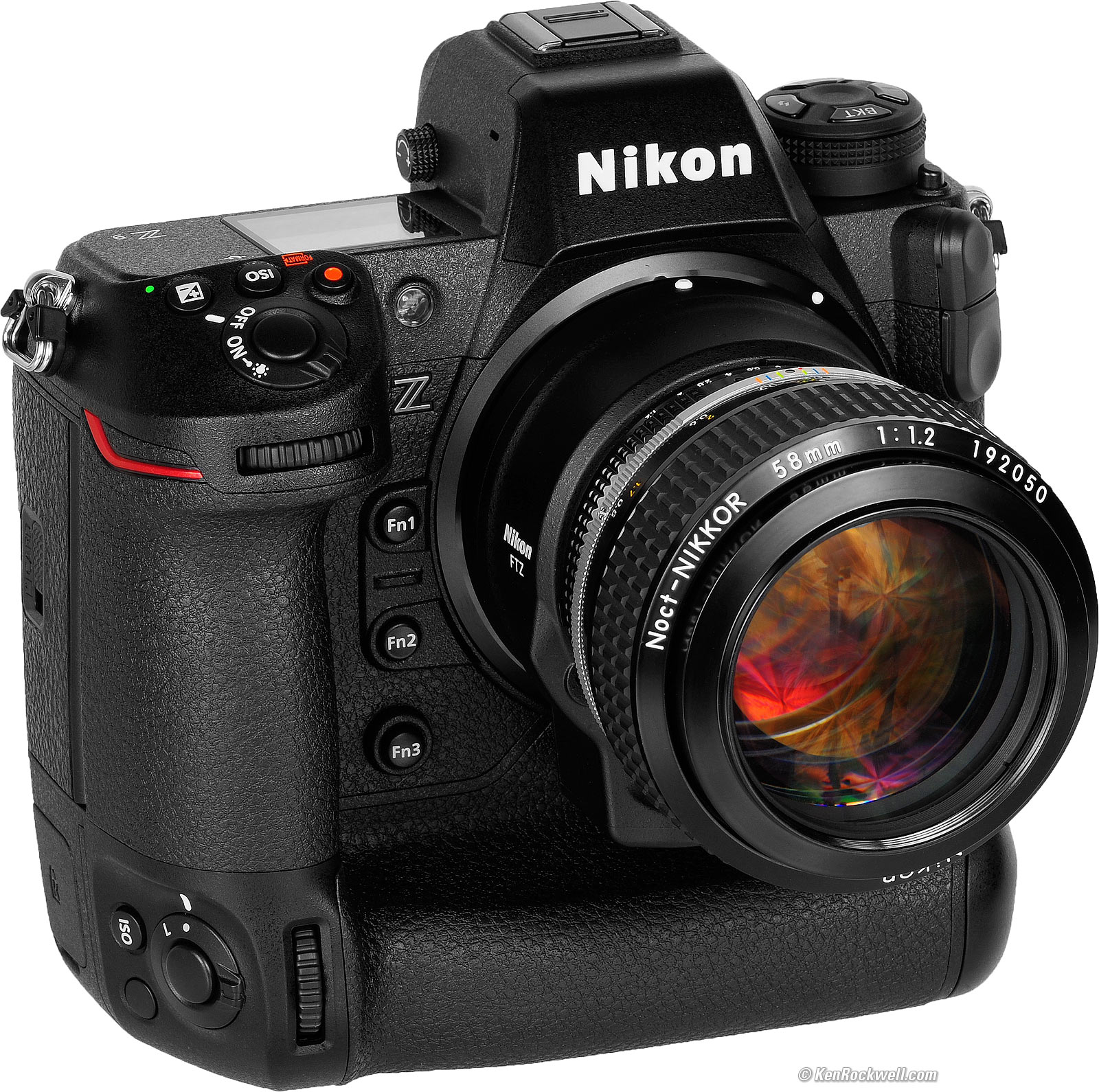
Nikon Z9 and Nikon AI Noct-NIKKOR 58mm f/1.2s on FTZ.
28 Oct 2021: FX Mirrorless, 45 MP @ 30FPS (20FPS in raw), 11 MP @ 120 FPS, 8K/29.97 video, 47.3 oz./1,340g with battery and one card, two slots for CFexpress type B or XQD cards, $five,496.95 at introduction. (Even as of March 2021 was in such need that used ones sold for most $7,500 over eBay if you know How to Win at eBay.)
Only became orderable with full specifications and photos on 28 Oct 2021; Nikon teased united states with only the model number "Z9" on 09 March 2021, and only revealed 30 FPS (but naught else) on 16 June 2021.
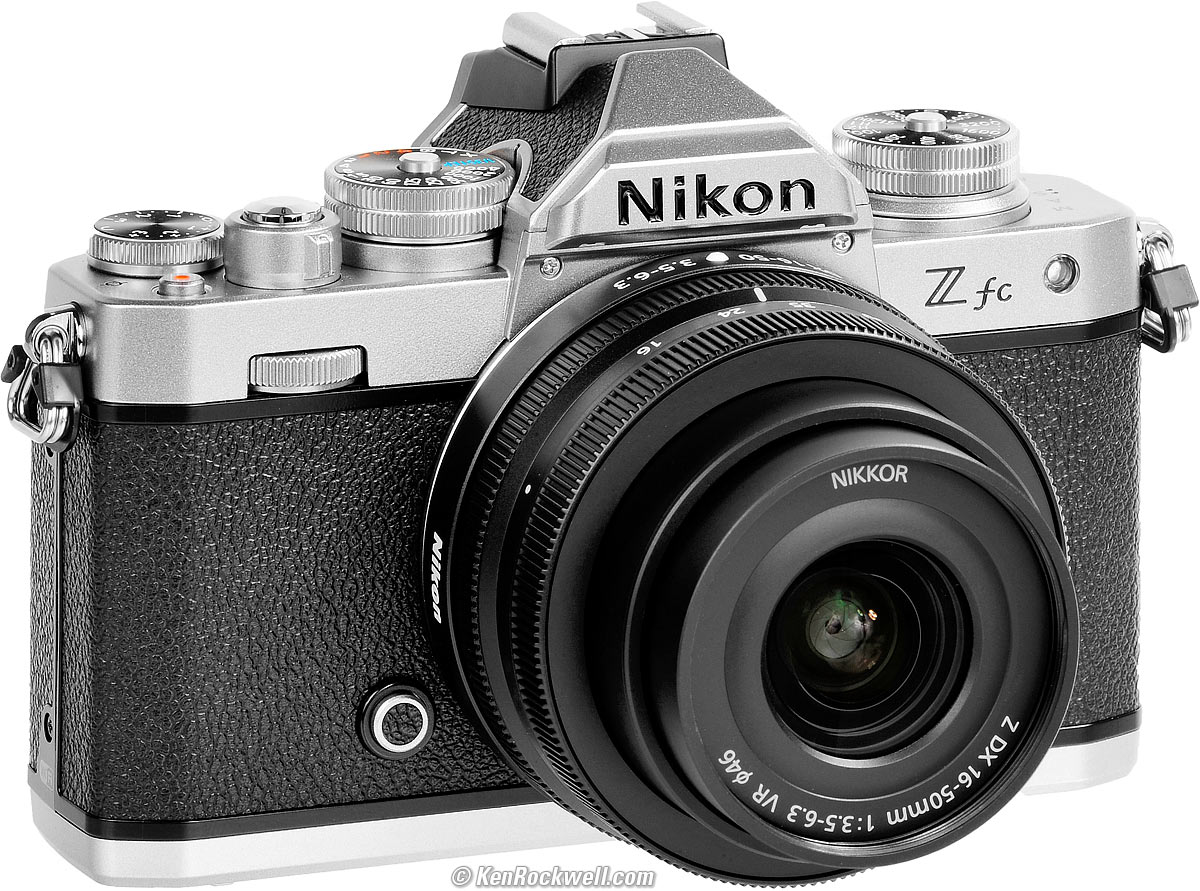
Nikon Z fc and Nikon Z 16-50mm DX VR.
29 June 2021: 21 MP DX @ xi FPS, ISO 51,200/204,800, 4K, 15.7 oz./445g with battery and SD card, $957 at introduction.
2020
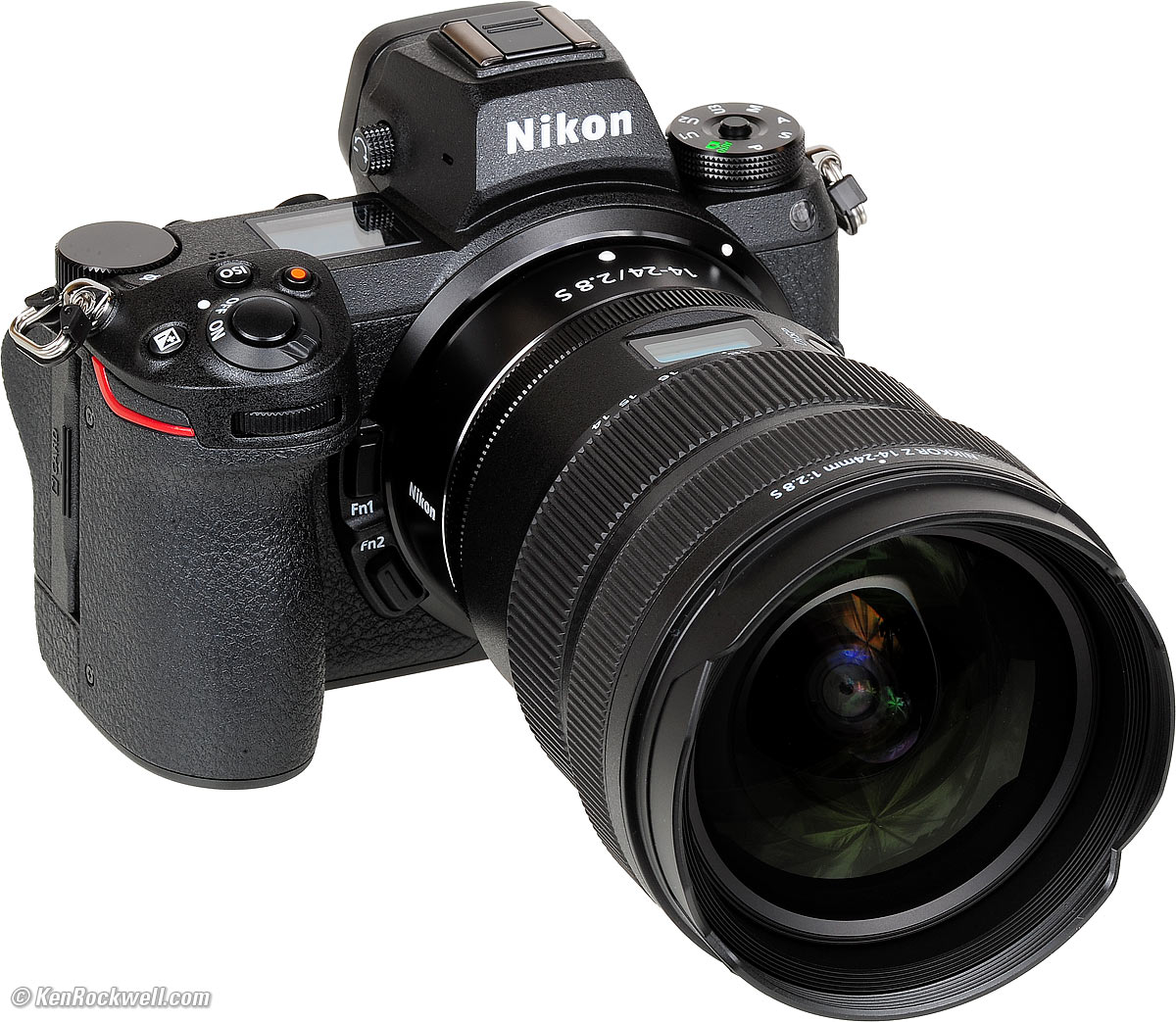
Nikon Z7 2 and Nikon Z 14-24mm f/ii.8 Due south.
xiv October 2020: 45MP FX Mirrorless, 10 FPS, ISO 102,400, $ii,997, 24.ix oz./705g with battery and one carte du jour, has one SD card slot and a second XQD card slot that also works with CFexpress type B cards.
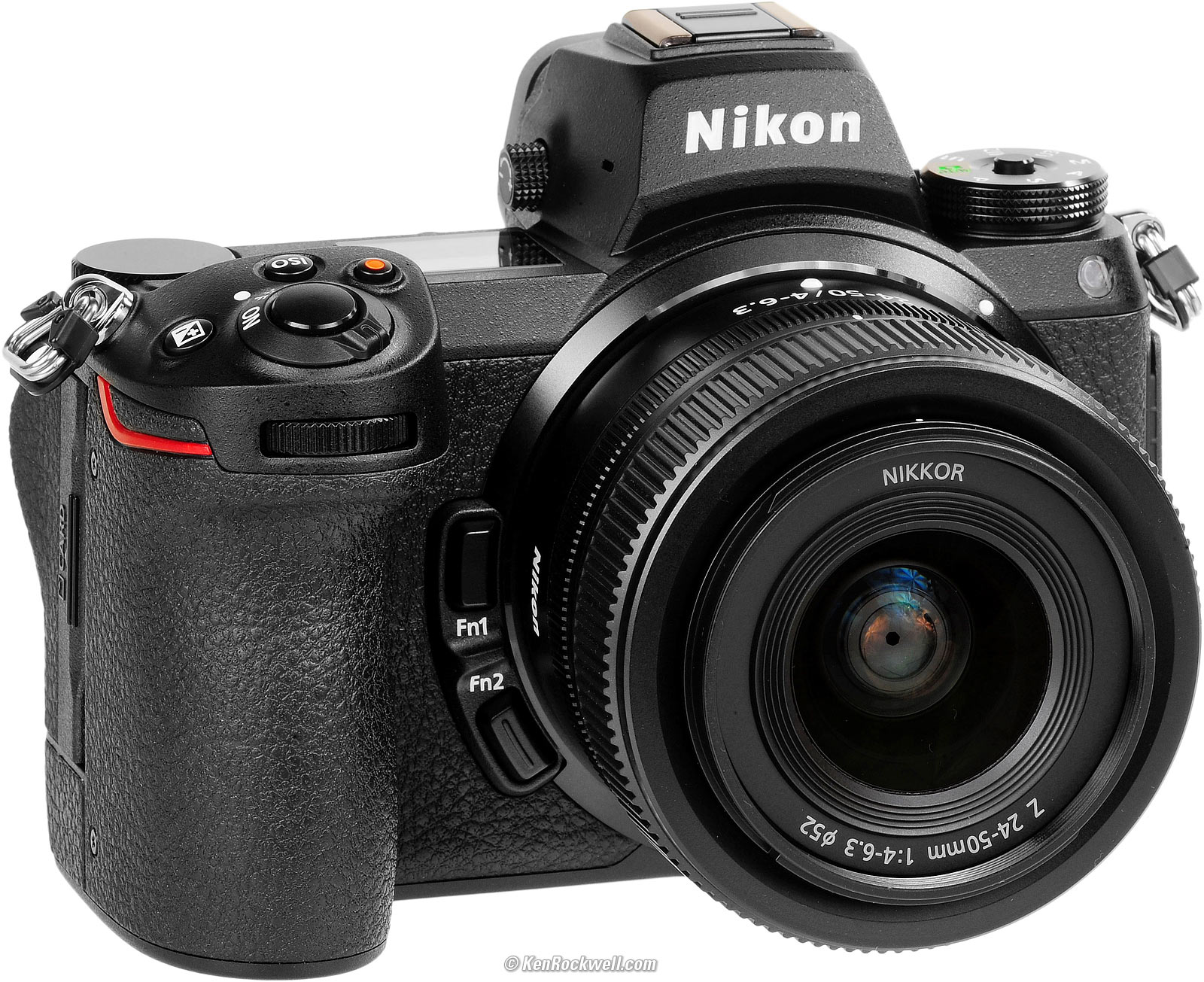
Nikon Z6 2 and Nikon Z 24-50mm.
14 October 2020: 20MP FX Mirrorless, fourteen FPS, ISO 204,800, $one,997, 24.9 oz./705g with battery and one card, has one SD card slot and a second XQD card slot that also works with CFexpress type B cards.
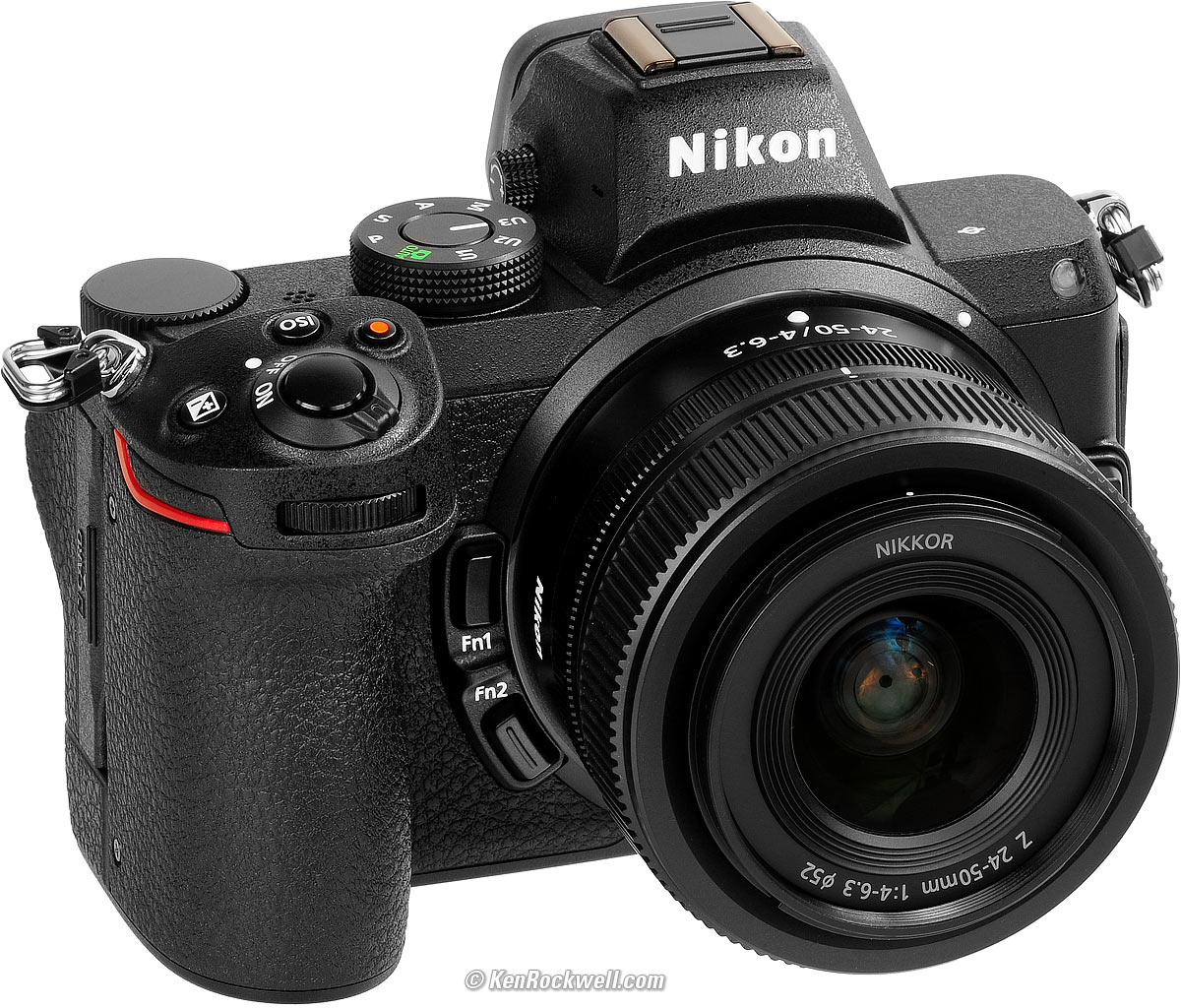
Nikon Z5 and Nikon Z 24-50mm f/4-6.iii.
21 July 2020: 24 MP FX Mirrorless, four½ FPS, ISO 102,400, 23.8 oz./675g with bombardment and SD card, $1,397.

Nikon D6 and 24-70mm f/2.8E VR.
12 February 2020: 20MP FX, 14 FPS, ISO 102,400, two CFexpress card slots, 51.two oz./1,450g with bombardment and 2 CFexpress cards, $6,497.
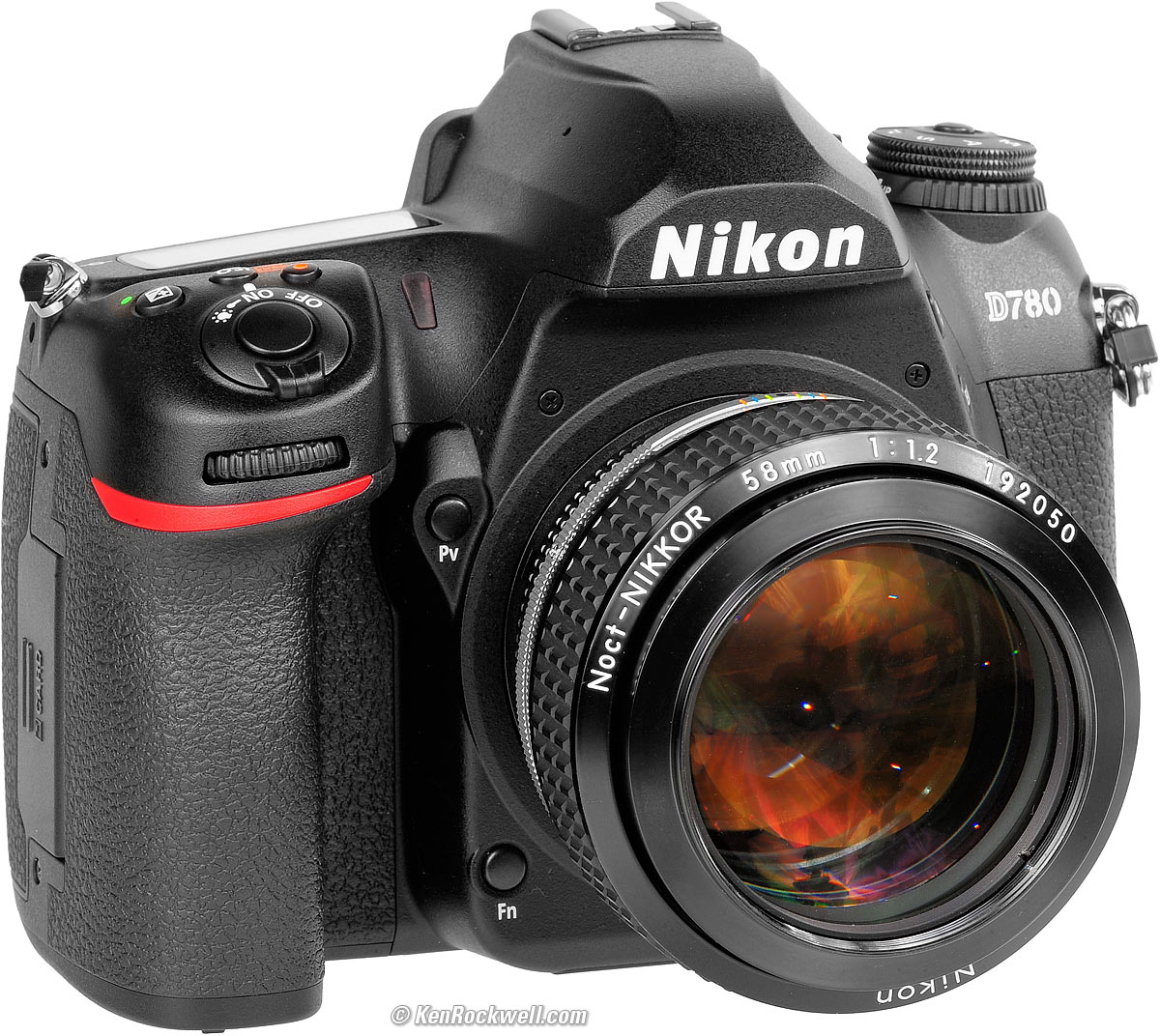
Nikon D780 and Nikon 58mm f/1.2 Noct-Nikkor.
07 January 2020: 20 MP FX, 7 FPS, 29.seven oz./840g with battery and bill of fare, 2 SD slots, $2,297.
2019
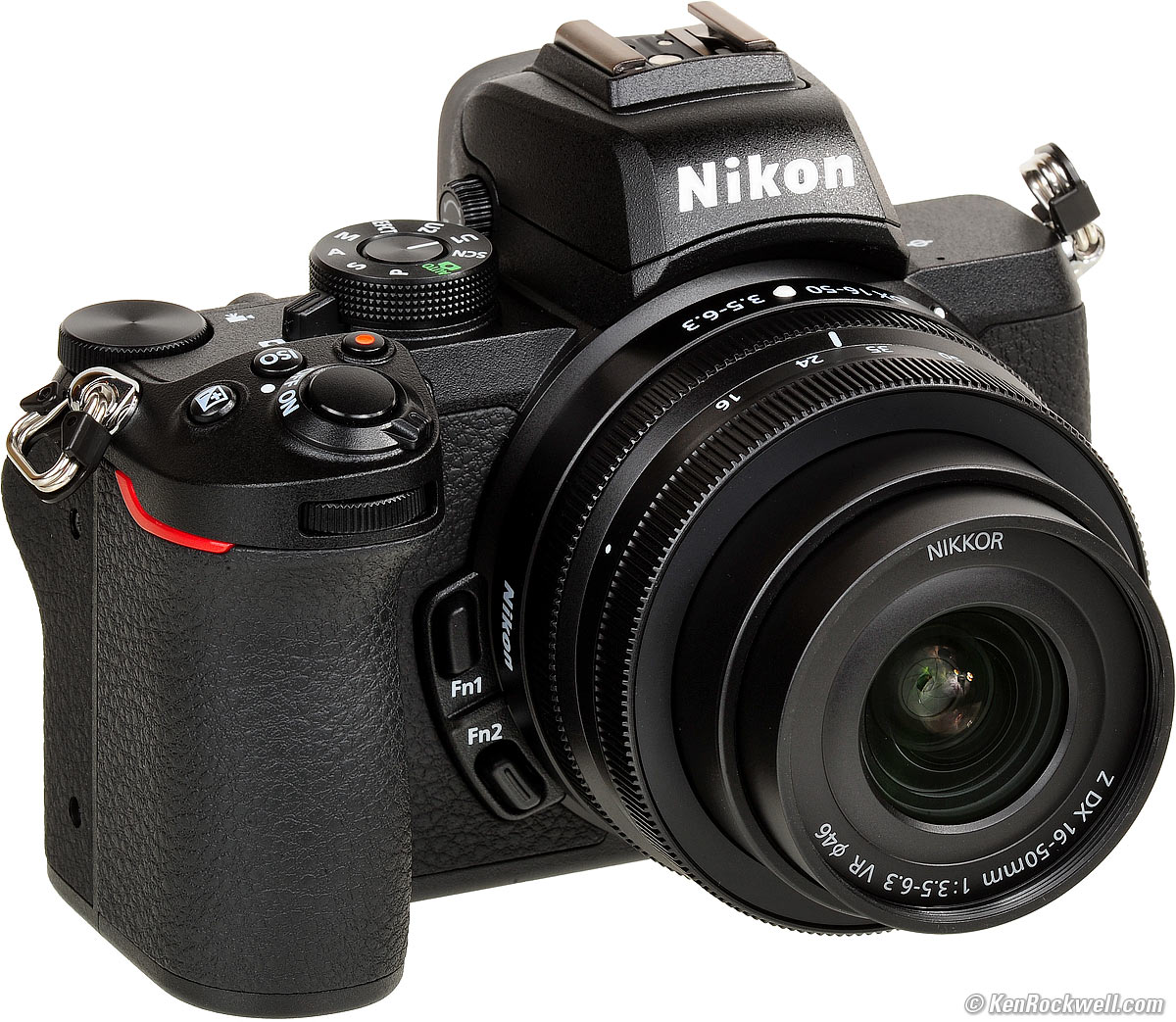
Nikon Z50 and 16-50mm VR DX.
ten October 2019: 21MP DX Mirrorless, eleven FPS, fifteen.7 oz./446g with battery and card, 1 SD card slot, $857.
2018
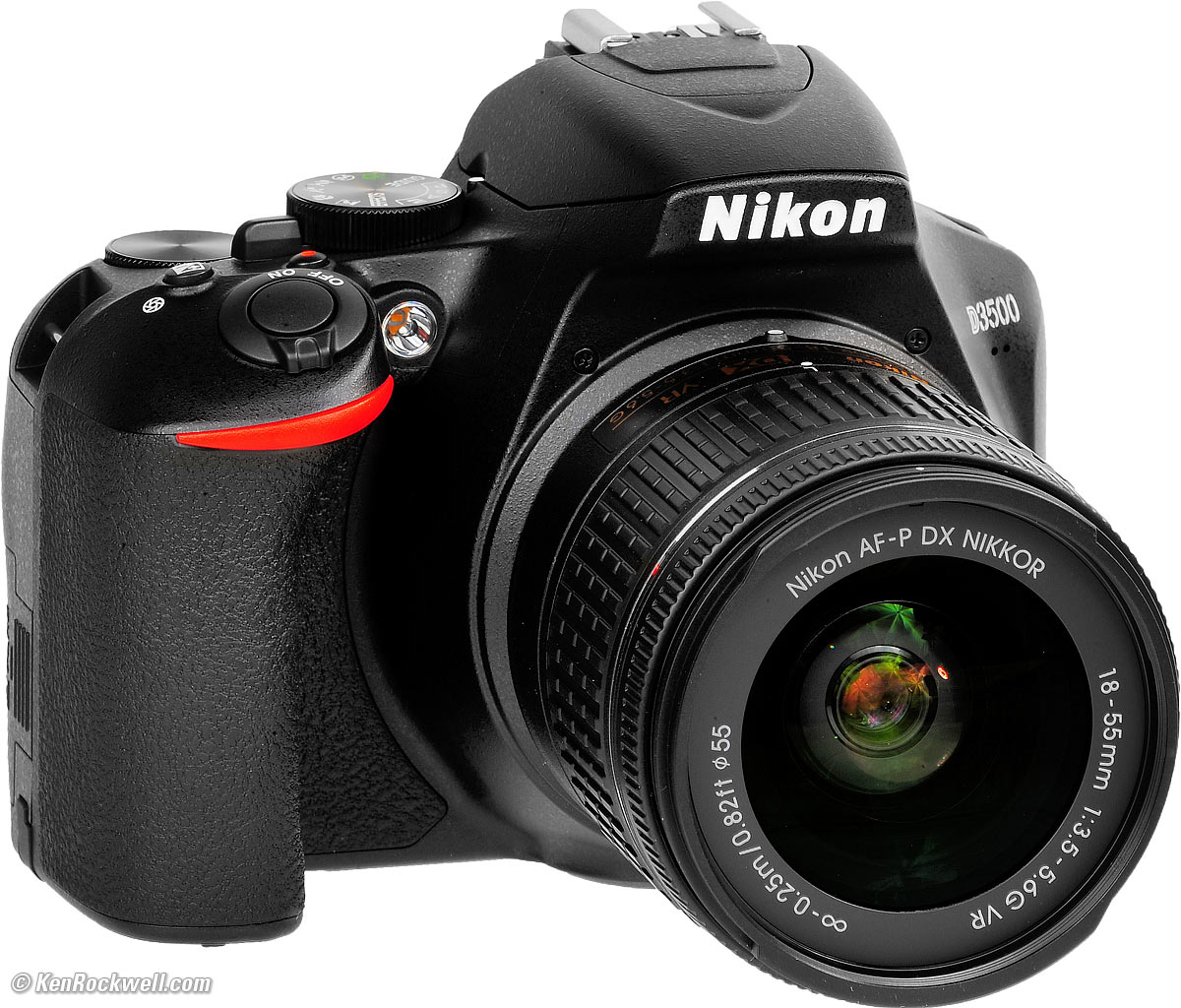
Nikon D3500 and included xviii-55mm VR DX AF-P.
xxx August 2018: 24MP DX, five FPS, $497 with lens.
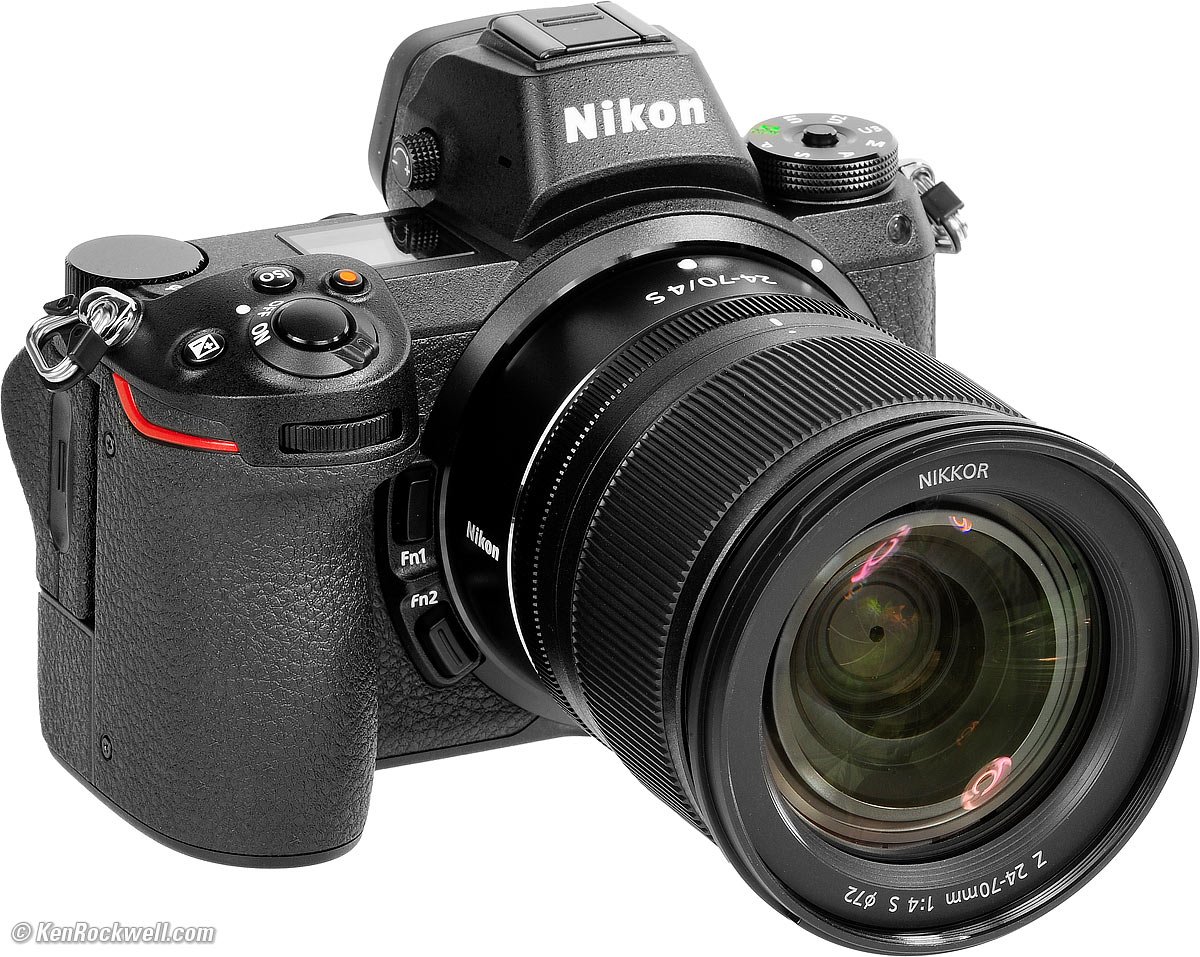
Nikon Z7 and Z 24-70/4 S.
23 Baronial 2018: 45MP FX Mirrorless, 9 (v.5) FPS, 23.8 oz./675g with battery and XQD menu, $three,397, promised for 27 September 2018.
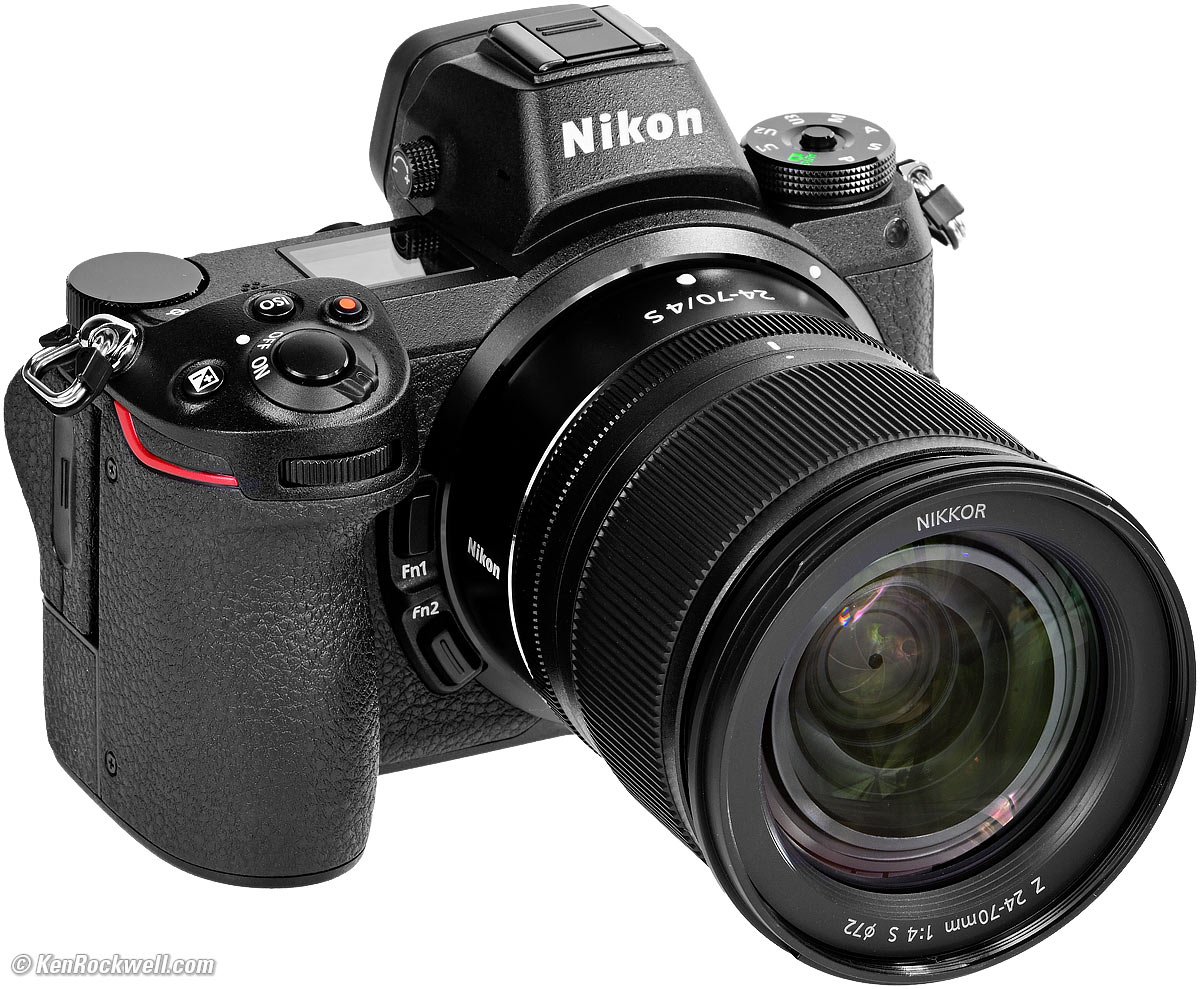
Nikon Z6 and Z 24-70/4 Southward.
23 August 2018: 24MP FX Mirrorless, 12 (5.5) FPS, 23.8 oz./675 g with battery and XQD card, $i,997, promised for late November 2018.
2017
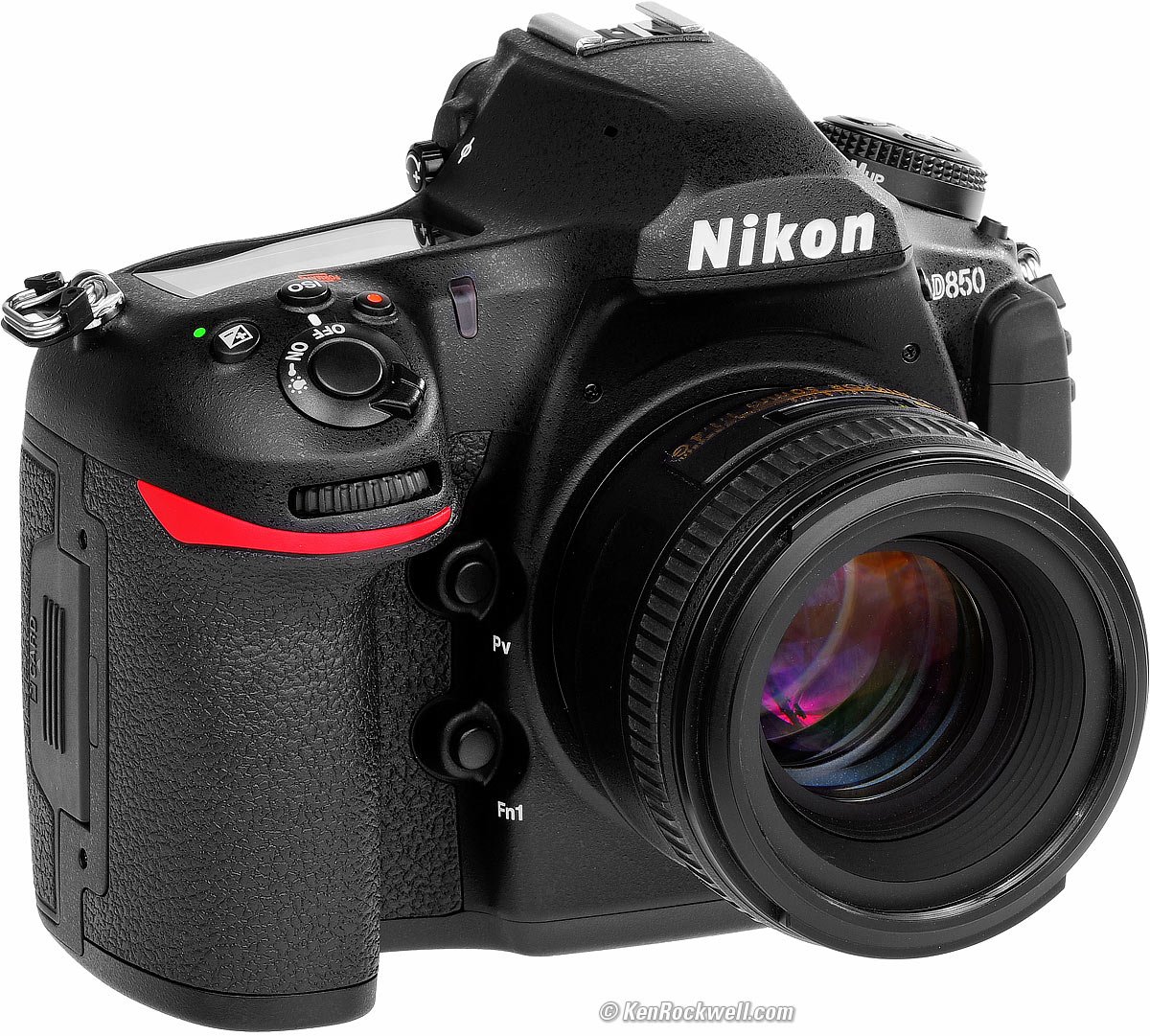
Nikon D850 and 50mm f/i.4G.
24 August 2017: 45MP FX, 7 FPS, 32.2 oz./913g with battery and SD menu, about $3,297.
The D850 updates 2014's D810 past adding the hot-rod AF system from the D5, 45MP and WiFi and bluetooth, but removing the built-in flash. It has two slots: one SD and ane XQD. LCD size is the same 3.2."
It also adds a rear thumb nubbin, flip touch LCD, partially lit buttons, a new "Natural Light" Auto White Balance setting and an "Car" picture command setting that attempts to optimize each imager automatically depending on what it thinks is in the motion-picture show.
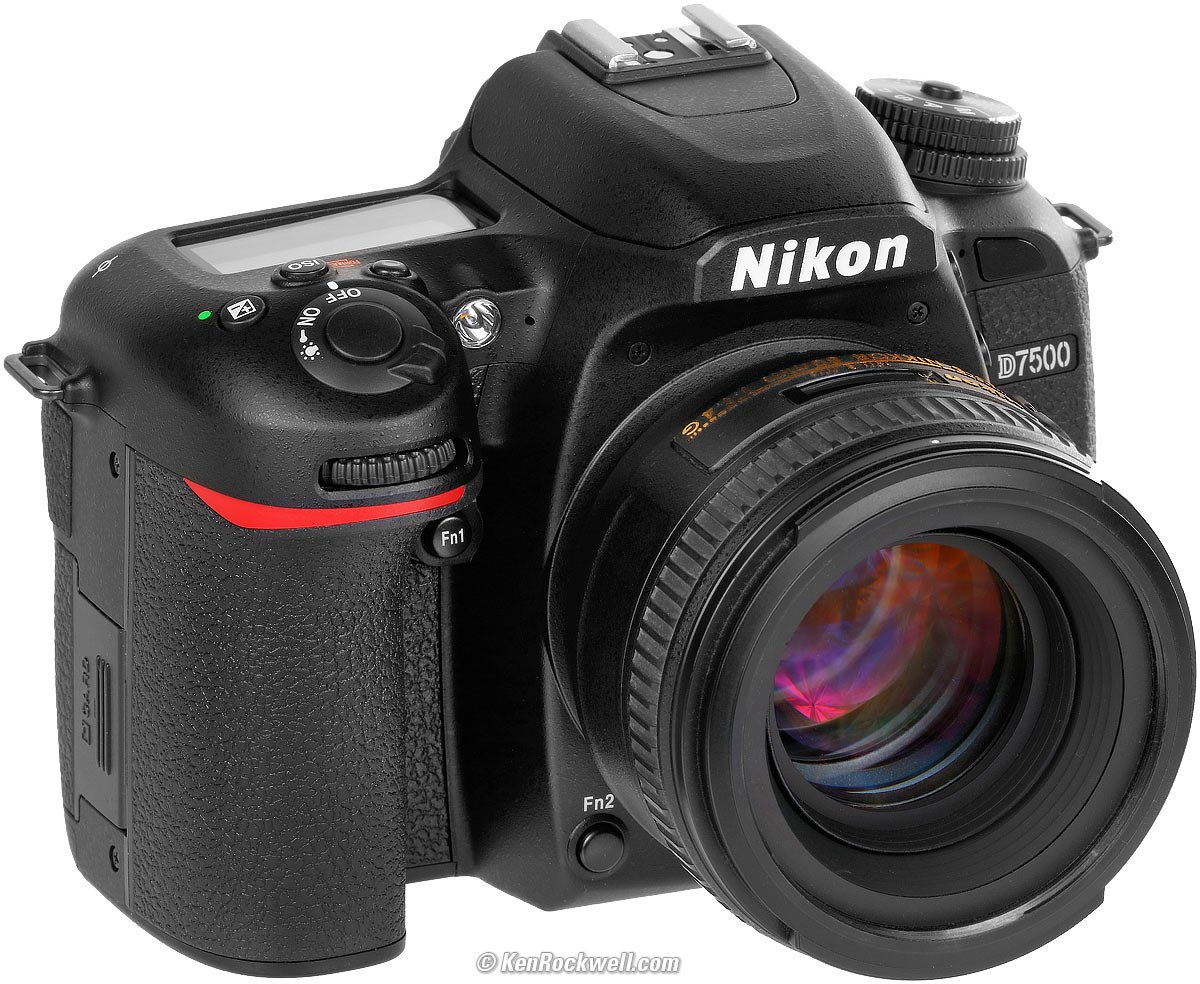
Nikon D7500 and 50mm f/1.4G.
12 April 2017: 21 MP DX, 8 FPS, 25.4 oz./720 chiliad with battery and carte du jour, $1,249 or $1,747 as a kit with 18-140mm VR DX.
The D7500 has the prototype sensor, light meter and processor of the top-of-the-line DX Nikon D500 and puts them in a D7200 body, keeping the D7200 mode punch and AF system and adding Bluetooth, 4K video and a flipping touch LCD.
The D7500 has the D500's same crazy expanded ISO 50 ~ 1,638,400 range, and bumps frame charge per unit to 8 FPS from the D7200's six FPS.
2016
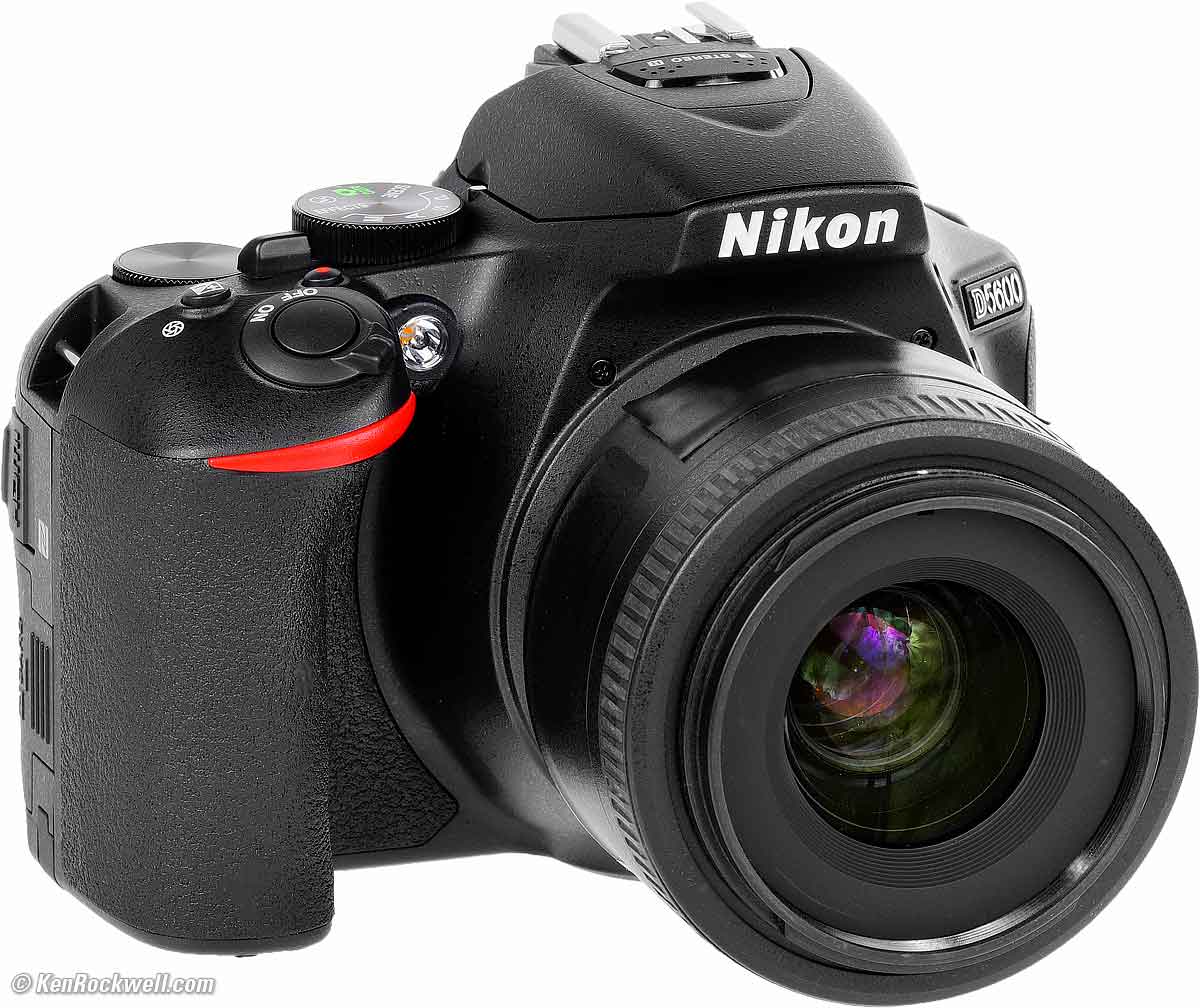
Nikon D5600 and Nikon 35mm f/i.8 DX.
ten November 2016 (delayed until 04 January 2017 in United states): adds Bluetooth and removes analog video outputs from the otherwise identical D5500.
24 MP, 5 FPS DX, $699 torso-only.
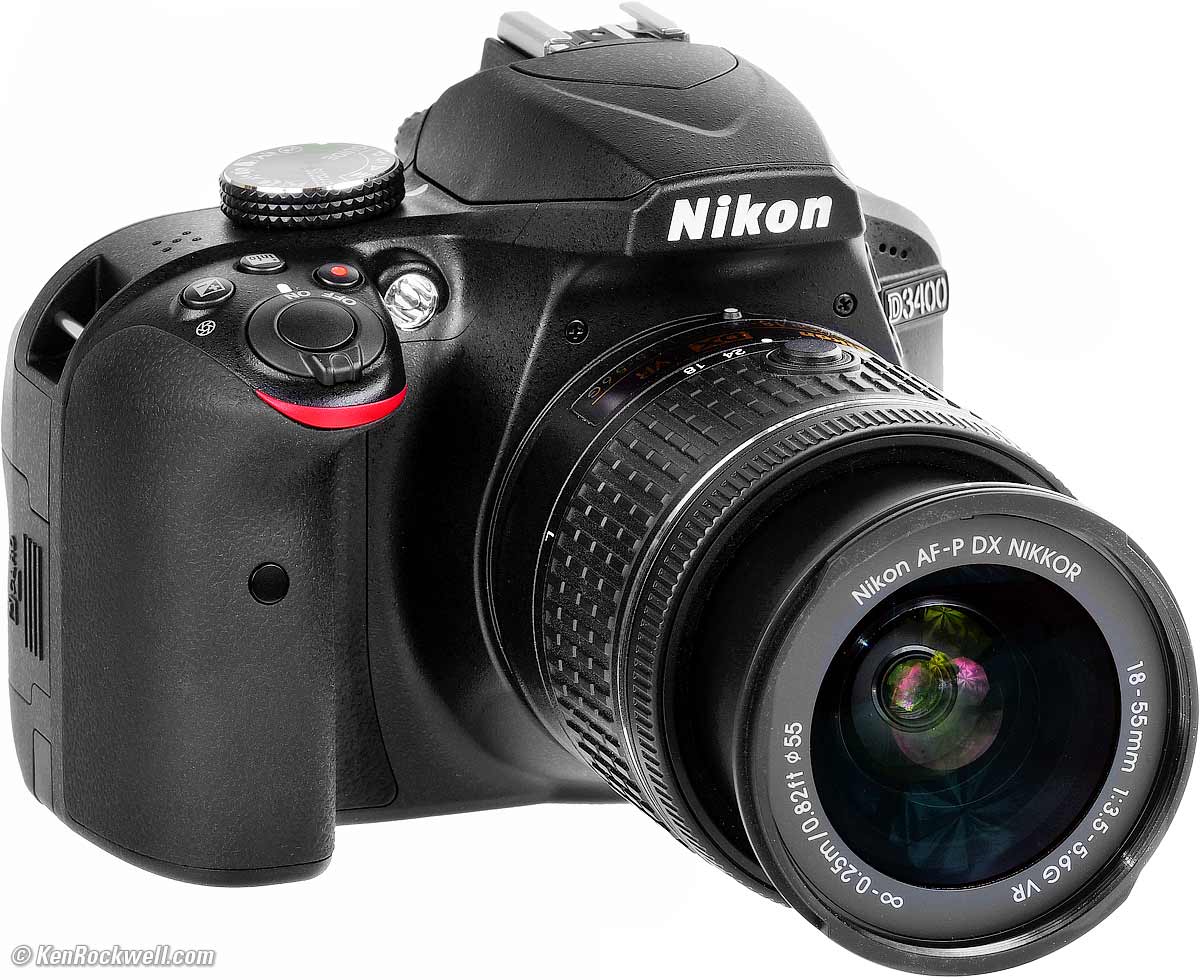
Nikon D3400 and included 18-55mm VR AF-P.
17 August 2016: Adds Bluetooth to the D3300, but has only half the power in the congenital-in flash.
24 MP, 5 FPS DX, $650 with lens.
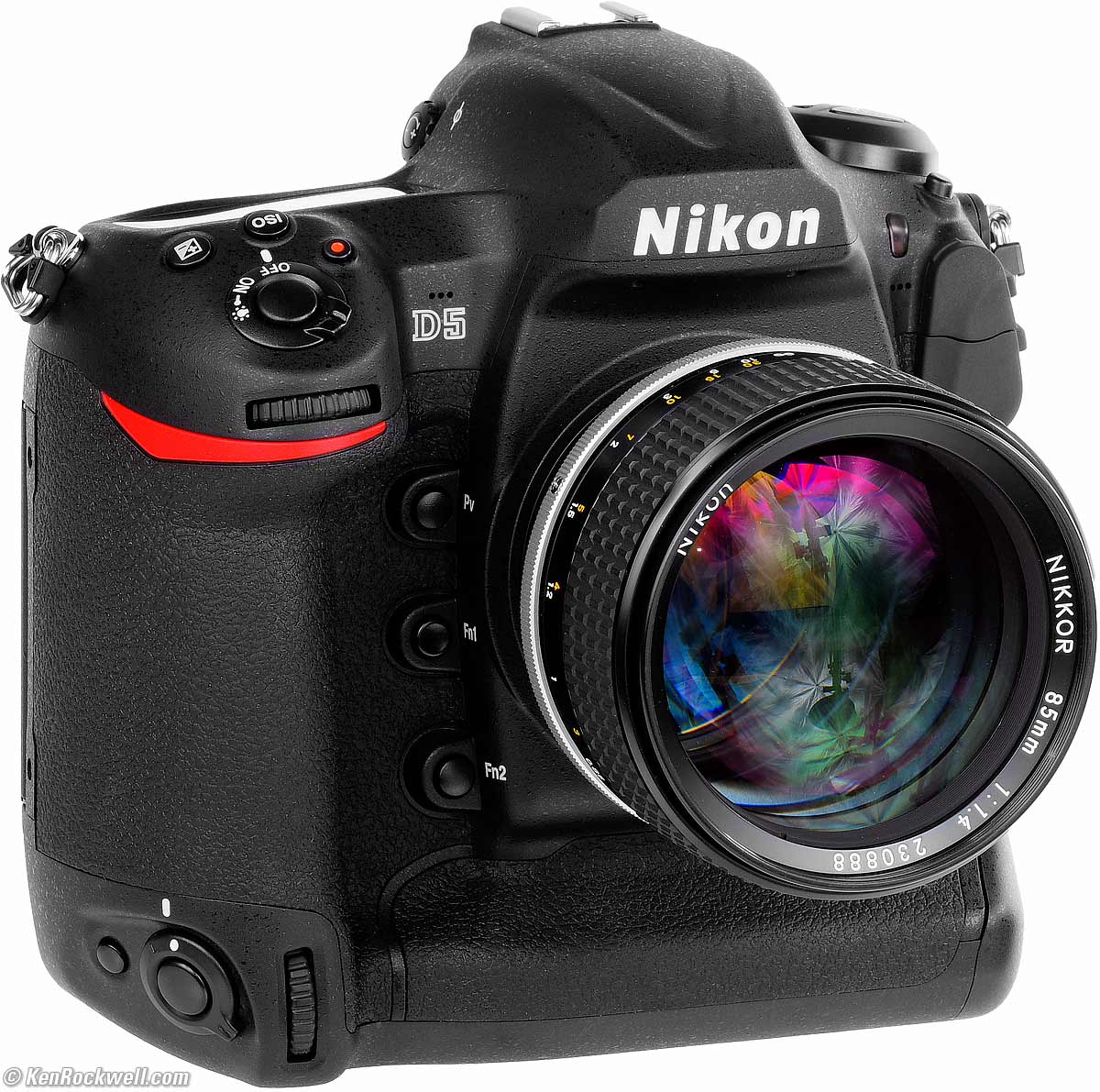
Nikon D5 with 85mm f/1.4 AI-due south.
05 January 2016: Nikon's tenth professional SLR. Adds 12 FPS, radio strobe control and a impact screen. Has same AF system as D500.
12FPS, twenty MP FX, 4K video, 49.9 oz./1,415 g. with bombardment and two CF cards. $vi,500 in either two CF-menu slot version or 2 XQD-bill of fare slot version.
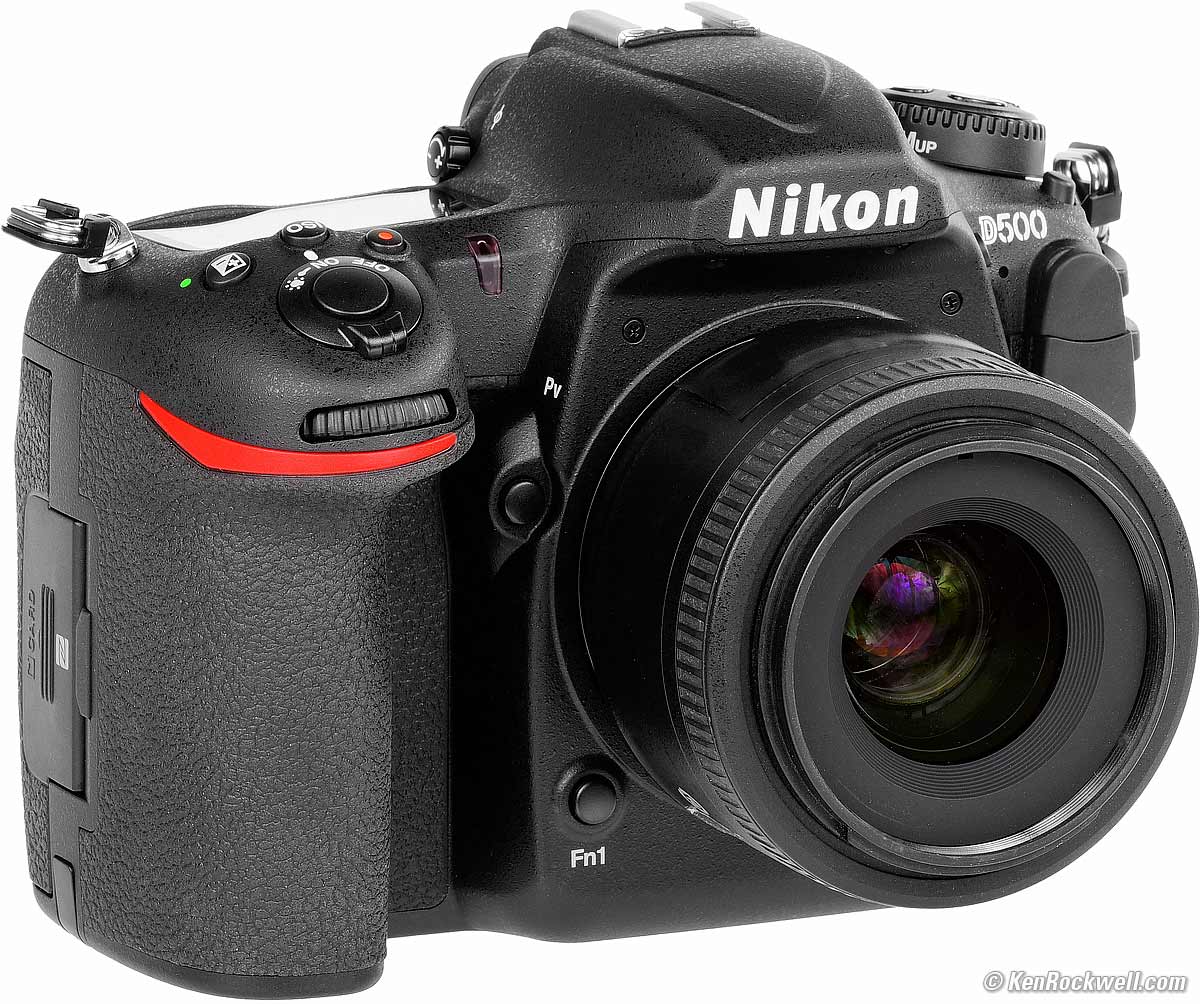
Nikon D500 and Nikon 35mm f/one.8 DX.
05 January 2016: Beginning DX to run at 10 FPS, but has no born flash. Has same AF organisation as D5.
ten FPS, 20 MP DX, 4K video, 30.4 oz./860g with battery and XQD menu, $1,999. or $3,070 for kit with 16-eighty lens.
2015
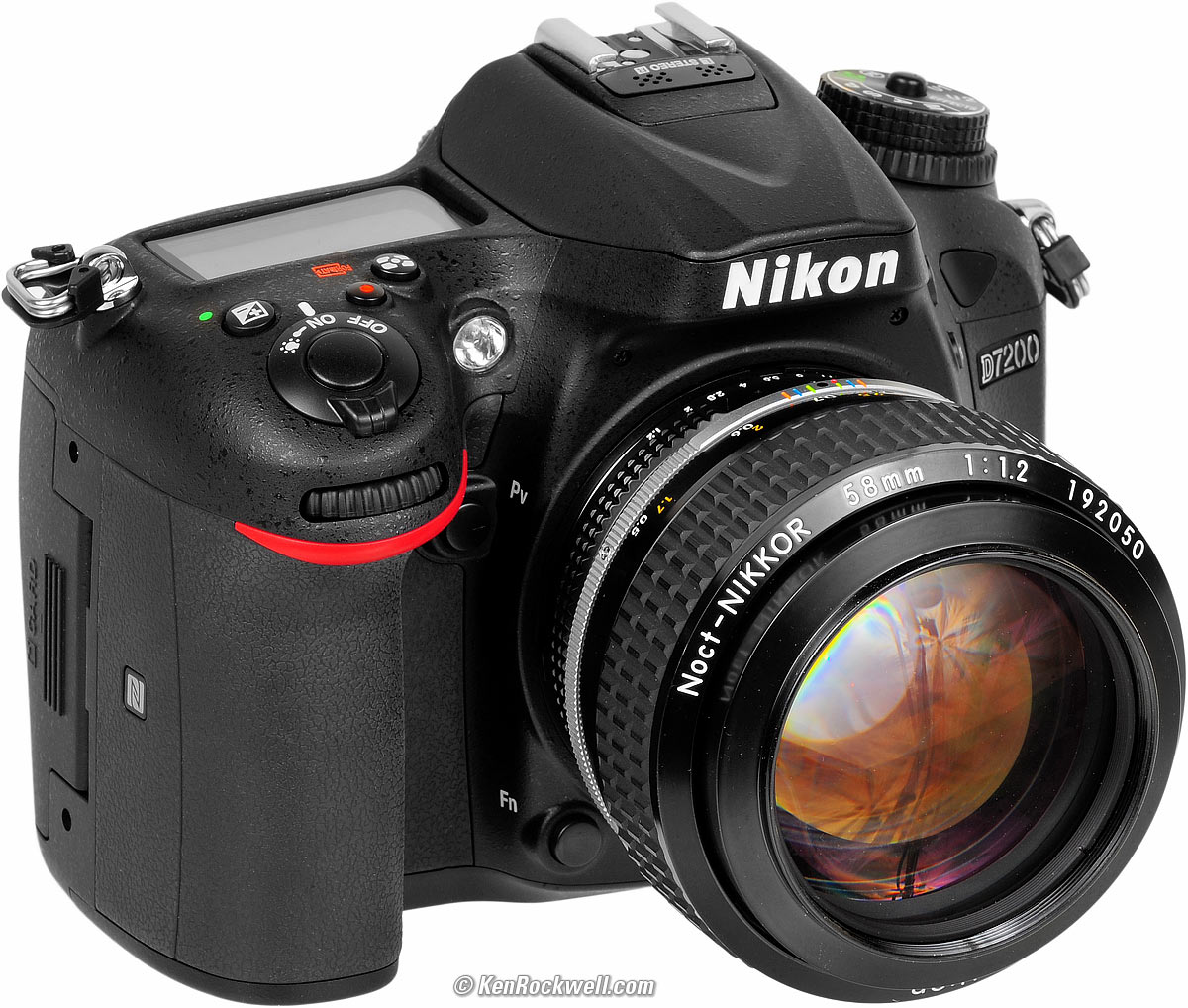
Nikon D7200 and 58mm f/1.2 Noct-NIKKOR.
02 March 2015: Adds NFC and Wi-Fi to the D7100.
24 MP DX, half-dozen FPS, 27.0 oz./765g with bombardment and carte du jour (takes ii-SD), $one,199 torso-simply, $1,699 with 18-140mm.
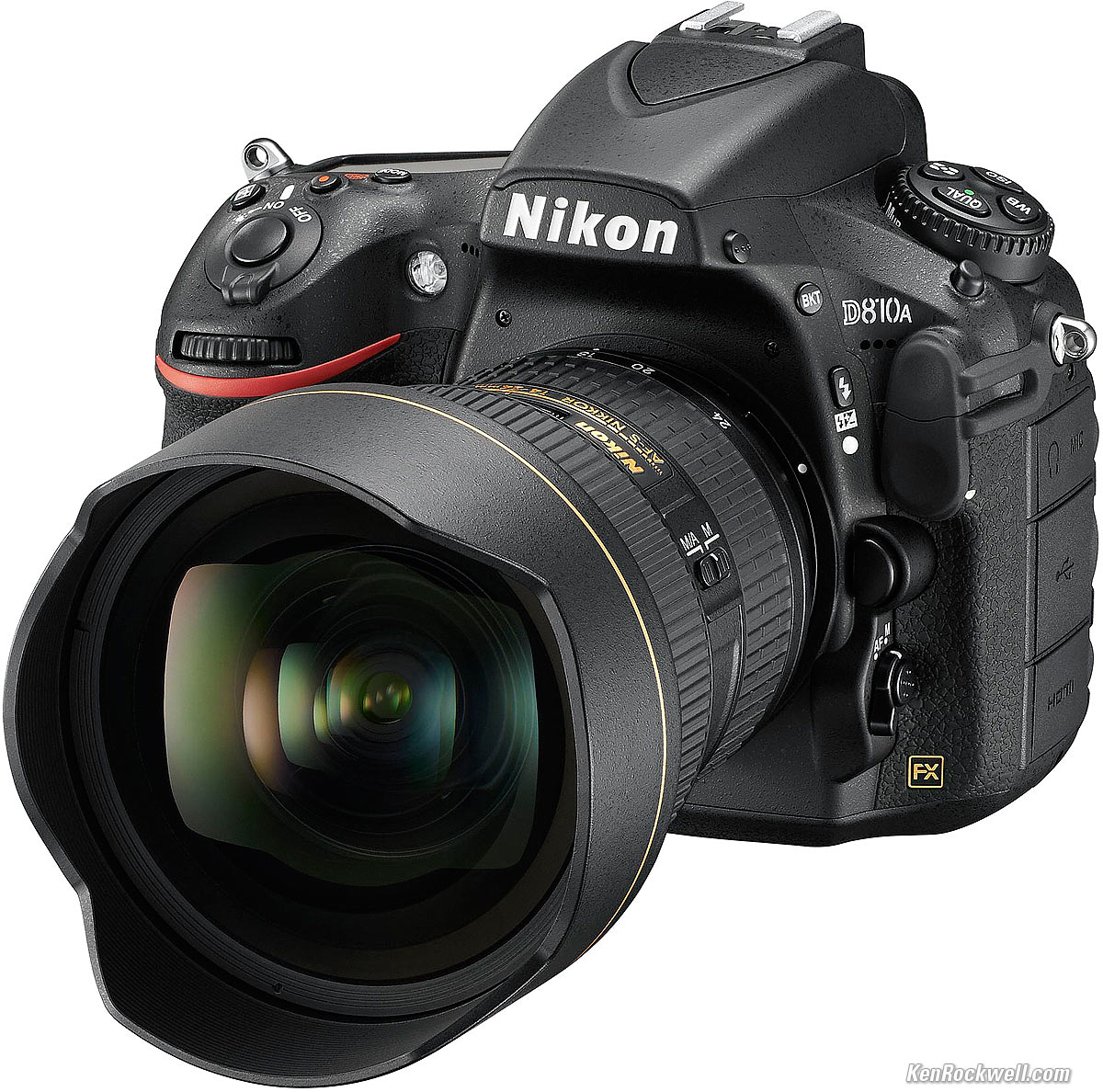
Nikon D810A and 14-24mm f/2.8.
10 February 2015: For astrophotography; passes the 656 nanometer hydrogen blastoff line.
36 MP FX, 5 FPS, 34.6 oz./980g with battery and CF card, $three,799.
It's the aforementioned as the D810, with a unlike IR-cut filter, ISOs starting at ISO 200, and the pick for exposures equally long equally 15 minutes.
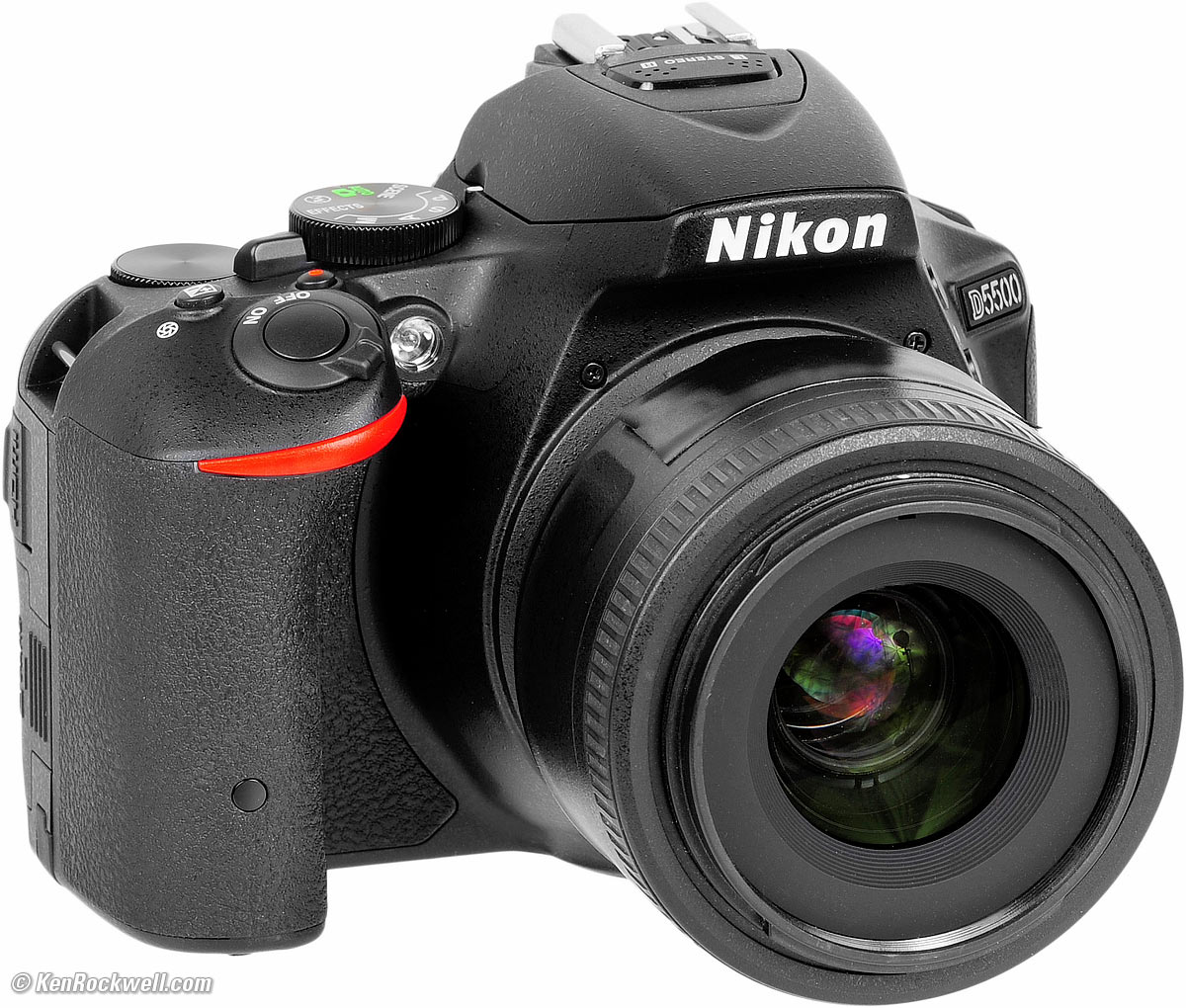
Nikon D5500 and Nikon 35mm f/ane.8 DX.
05 January 2015: 24 MP DX, 5 FPS, 16.vi oz./470 g with battery and menu, $899 torso-only.
The D5500 adds a touch screen to the D5300, and takes abroad GPS and 2 ounces of weight.
2014
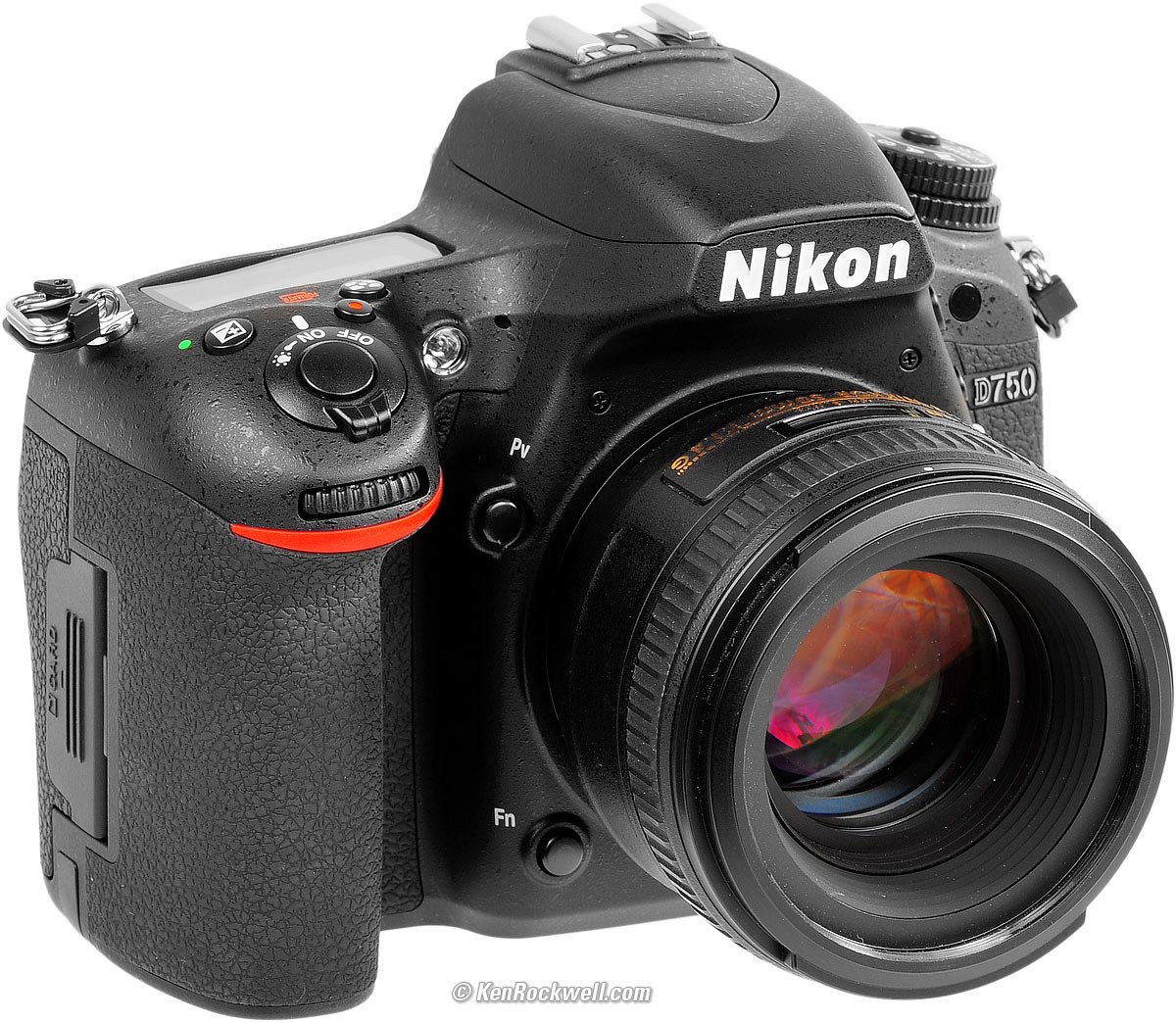
Nikon D750 and 50mm f/1.4 Thousand.
12 September 2014: 24 MP FX, 6.5 FPS, 29.7 oz./840g with bombardment and card, $two,300.
The D750 adds the superior AF system of the D810 to the D610, as well as more speed than either at 6.5 FPS. Information technology also adds a flippy screen, Nikon'south outset on a full-frame DSLR.
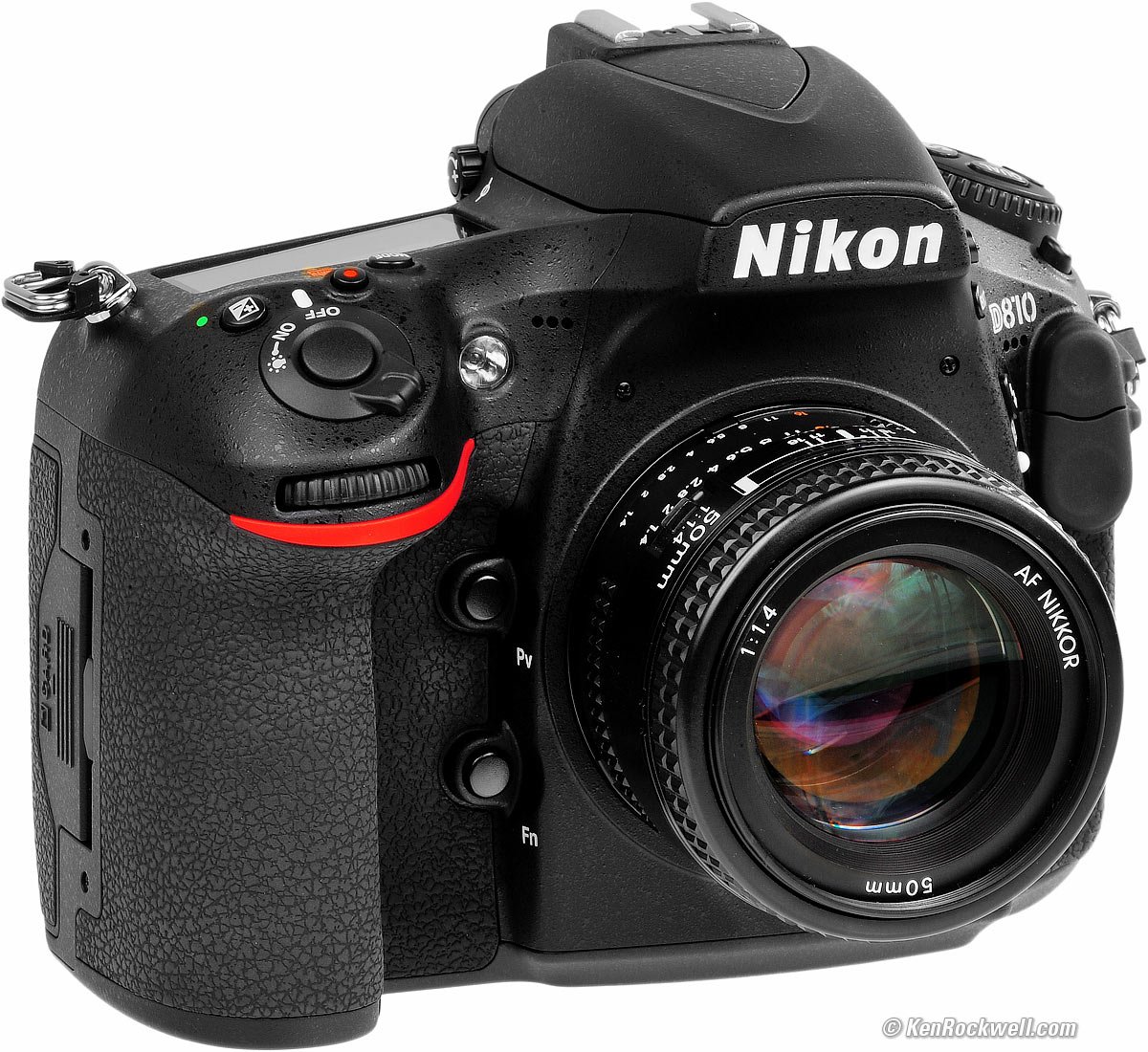
Nikon D810 and 50m f/1.4 AF.
26 June 2014: 36 MP FX, v FPS, 34.6 oz./980g with battery and CF card, $iii,300.
The D810 adds v FPS and a stereo mic to the onetime D800 and D800e.
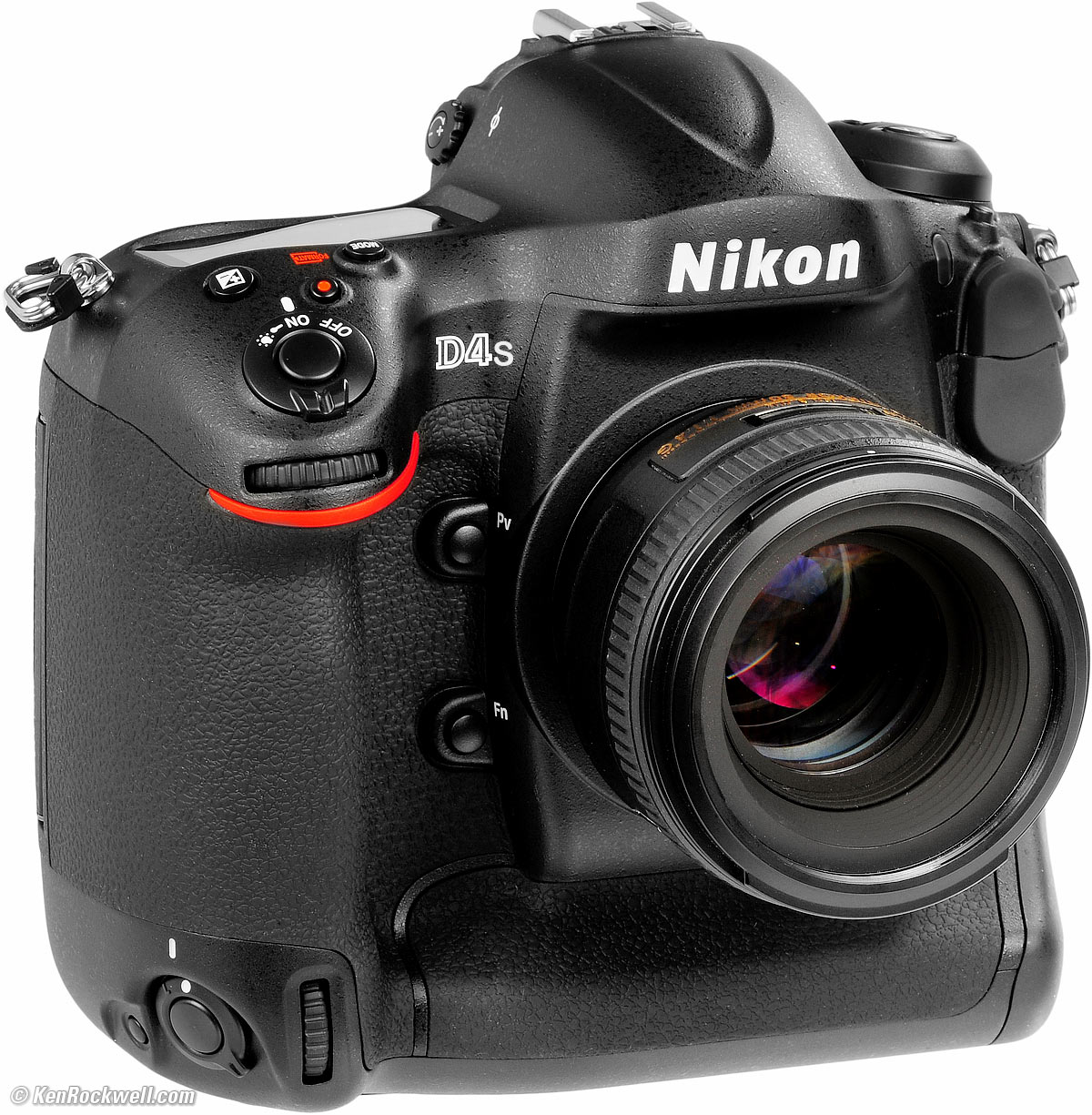
Nikon D4S and 50mm f/1.4 Thou.
25 Feb 2014: xvi MP FX, 11 FPS, 47.3 oz./1,337g, $half dozen,500.
The D4s is a D4 with a faster computer to allow more than dissonance reduction to give a foolish ISO 409,600 setting, 11 frames per 2d up from 10, and a agglomeration of other small features changes. The D4S development was announced 07 Jan 2014 at CES 2014.
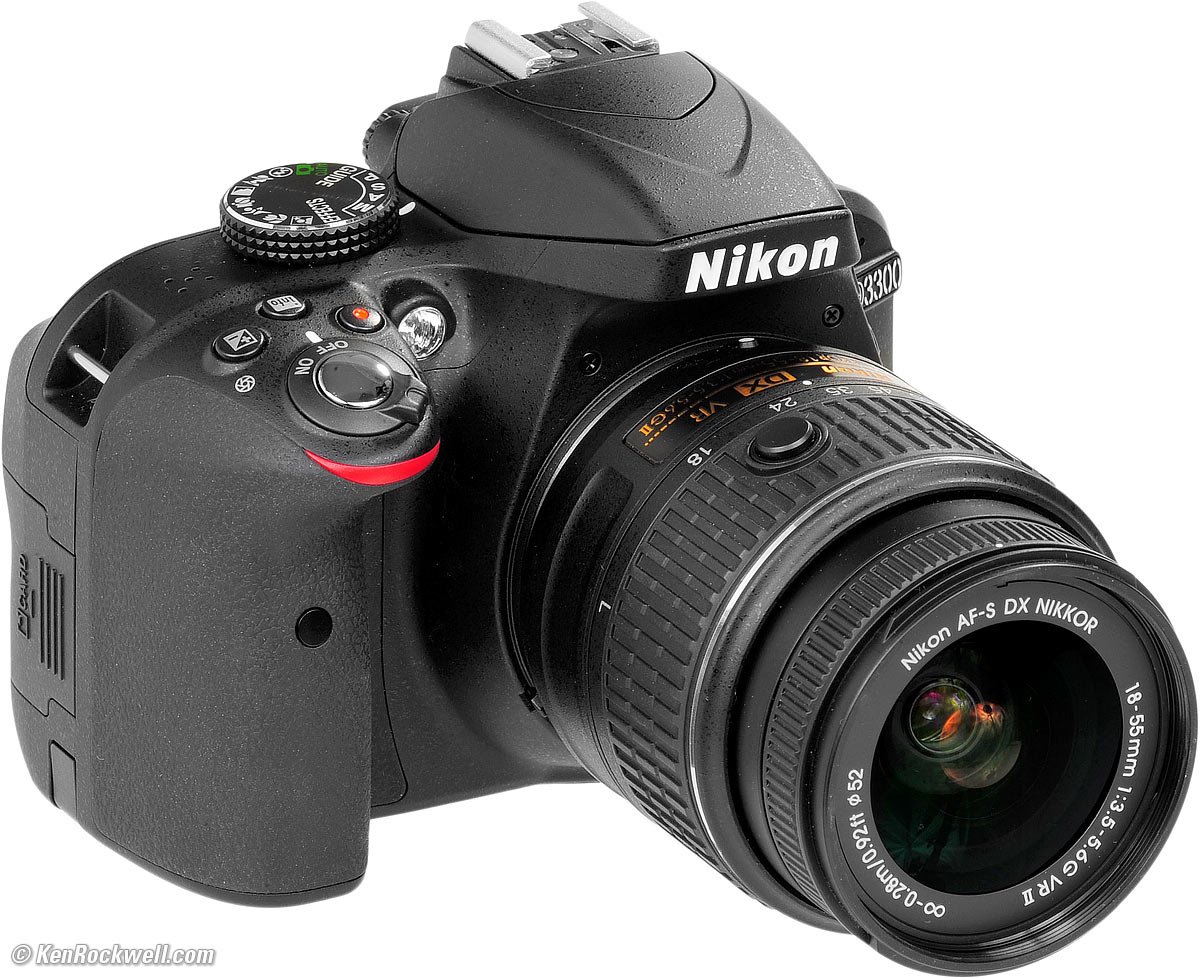
Nikon D3300 and eighteen-55mm VR II.
07 January 2014: 24MP DX, 16.2 oz./460g with bombardment and SD card, ISO 100 - 12,800 (25,600), 11-point AF, 3" LCD, five FPS, 1080p video, mono mic. $650 with lens; as well comes in gray and comes in red for the aforementioned price.
A small revision to the D3200 of 2012; adds a grey color version and 45g lighter; aforementioned AF and resolution as D3200.
2013
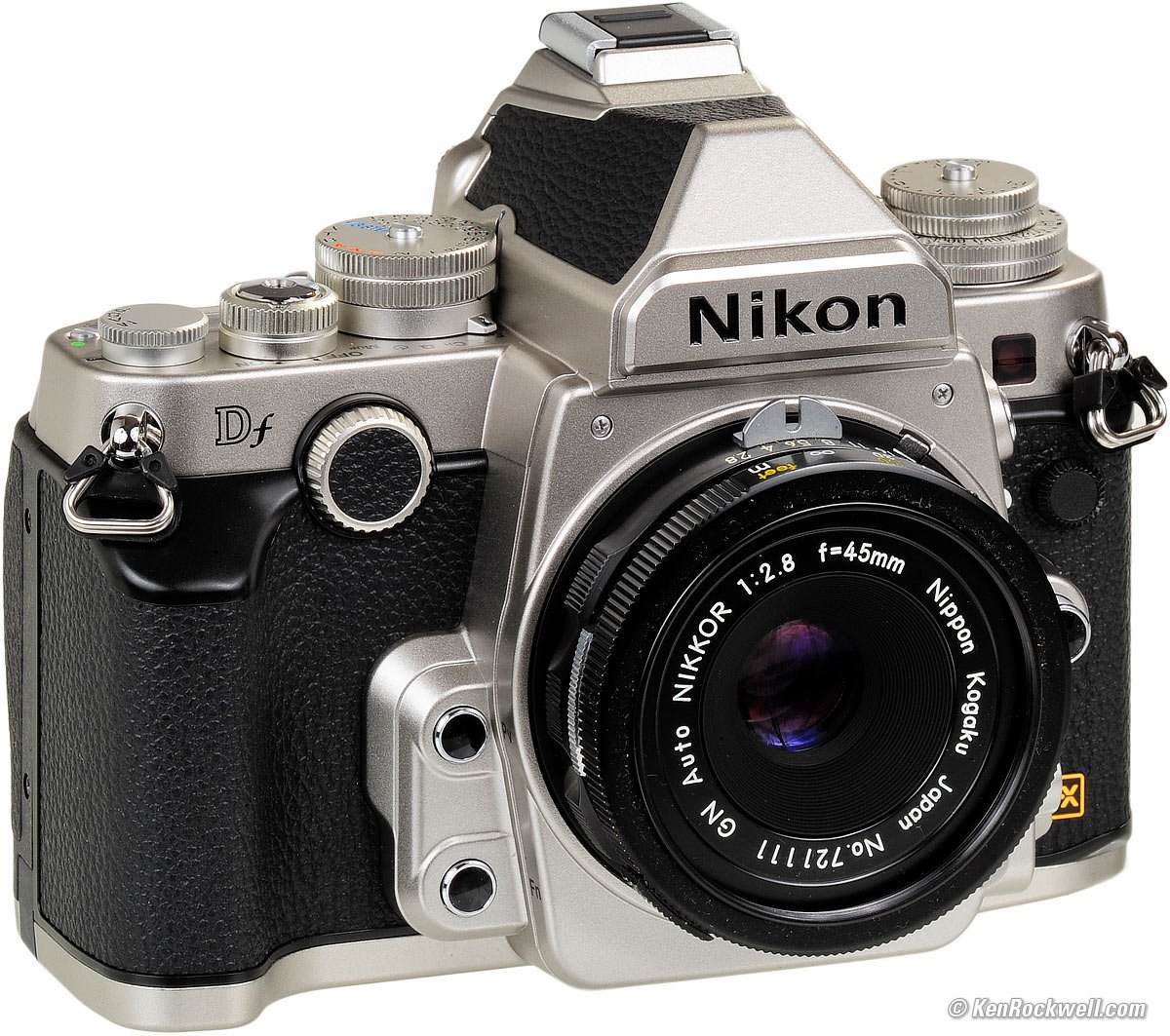
Nikon Df and 1970 Nikon GN Machine NIKKOR 45mm f/2.8.
05 November 2013: sixteen MP FX, ISO 50 ~ 204,800, five.5 FPS, iii.2" 921k dot LCD, no video or mic, 27.0 oz./765 thousand with battery and card. $2,749, or $three,000 with lens. Too comes in black.
Unlike every other Nikon DSLR e'er, the Nikon Df is a completely new photographic camera, taking the ergonomic brilliance of the Nikon Iron and stuffing the digital guts of a D4 into it. The Df is an all-metal piece of excellence with real knobs and buttons, not the push-multifunction-button-and-spin-dial price-cutting baloney of Nikon's SLRs since the 1990s.
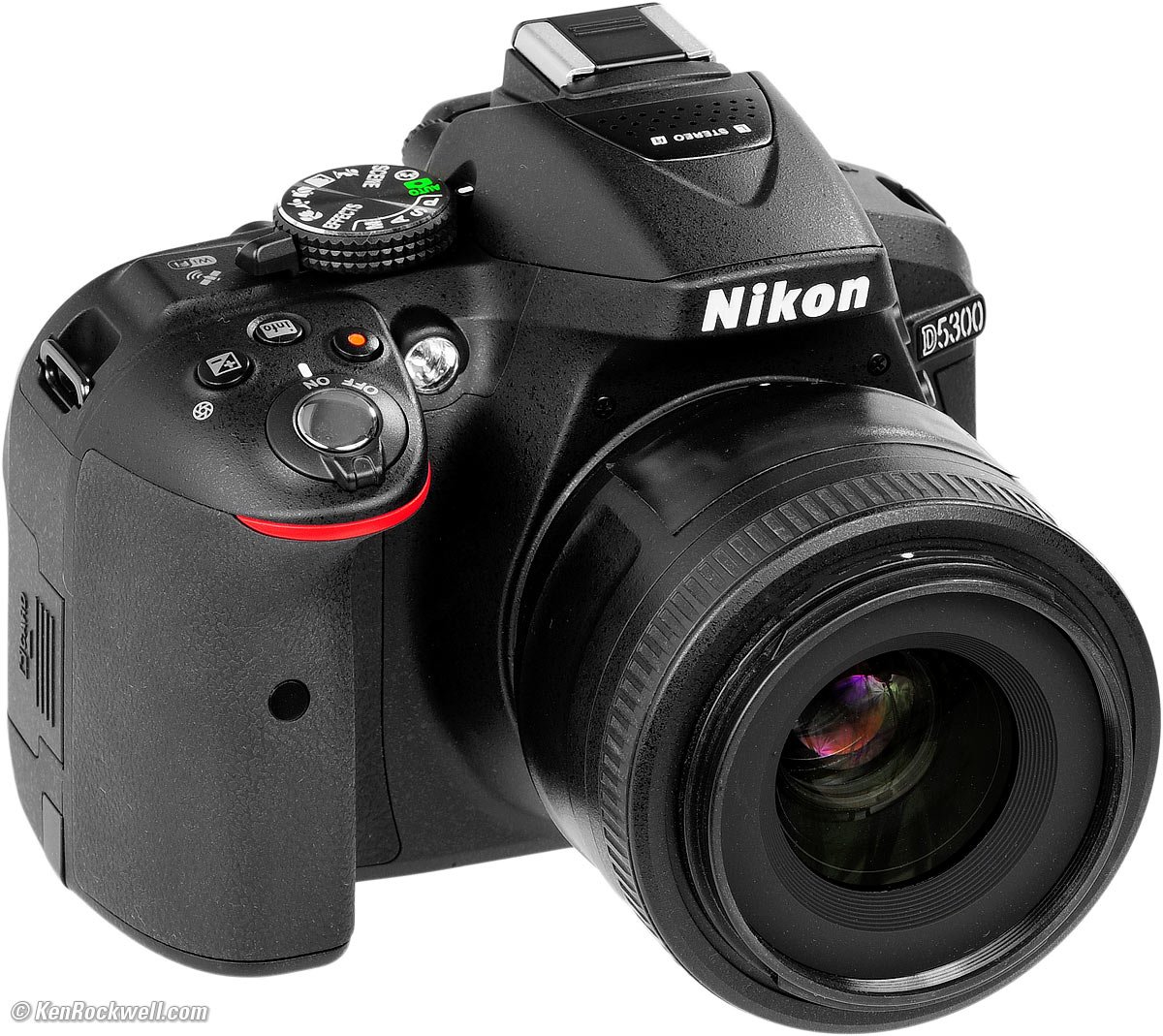
Nikon D5300 and Nikon 35mm f/i.eight DX.
17 October 2013: 24 MP DX, 5 FPS, iii" flip LCD, 1080p video, mono mic, thirty.0 oz./850 thousand with battery and card. $799, or $1,400 with lens.
The D5300 is the same as last yr's D5200, calculation built-in Wi-Fi and GPS.
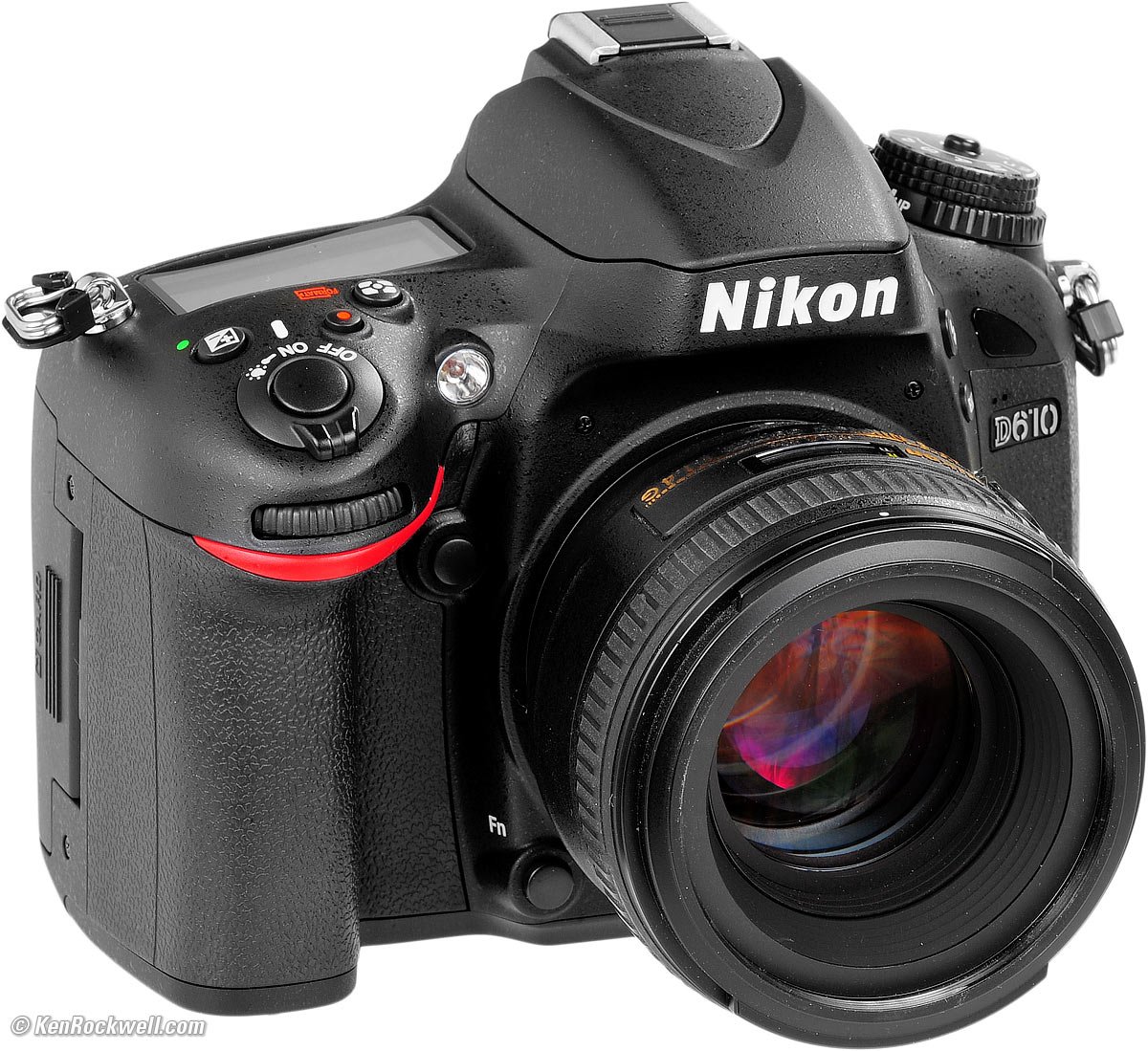
Nikon D610 and 50mm f/one.four G.
08 October 2013: 24 MP FX, six FPS, 3.2" LCD, 1080p video, mono mic, 30.0 oz./850 thousand with battery and carte du jour, $ane,999.
The D610 is the aforementioned equally the D600, supposedly with a "new shutter" that begets six FPS and a 3 FPS "quiet" mode.
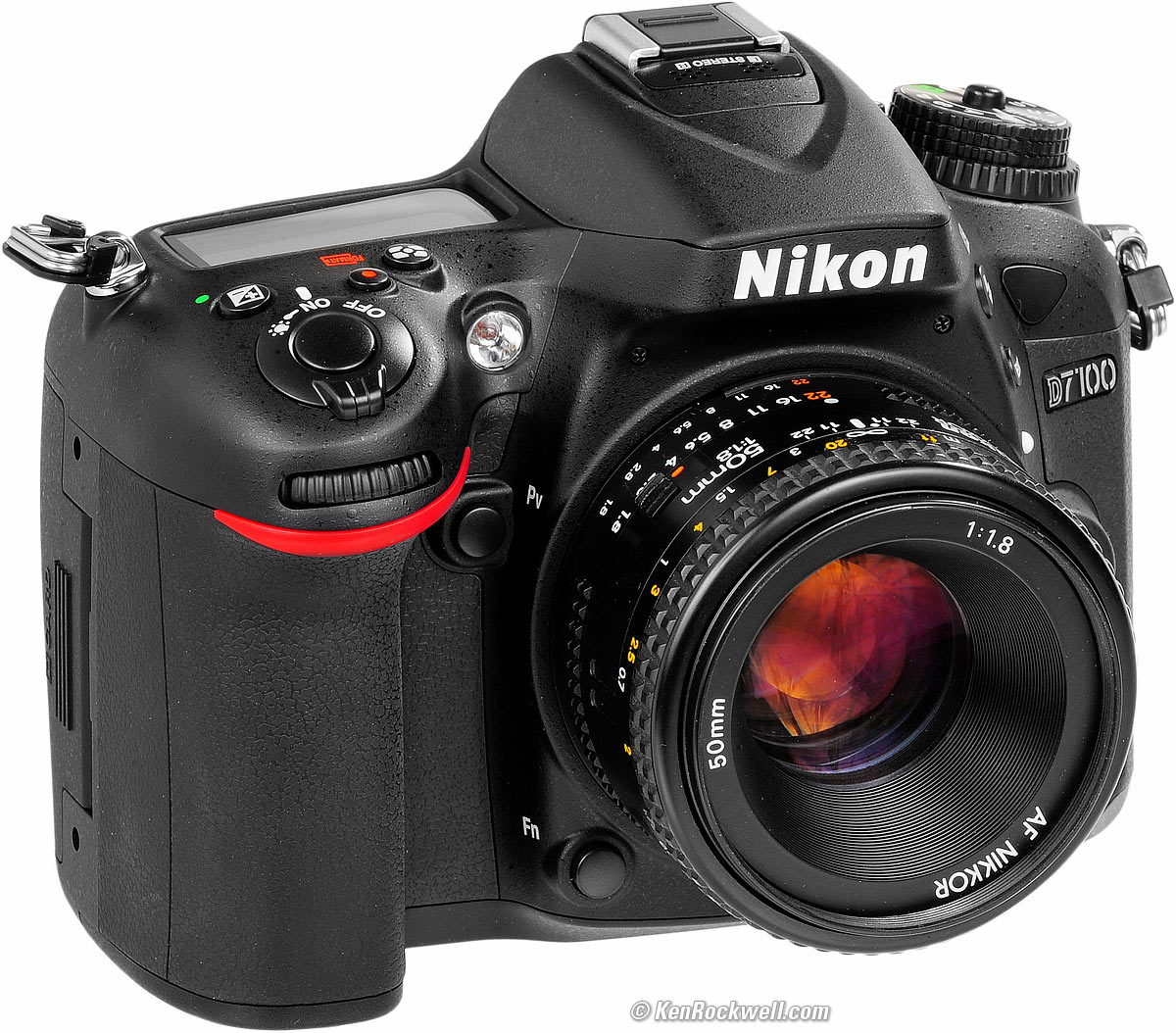
Nikon D7100 and 50mm f/i.8 AF.
21 Feb 2013: 24 MP DX, 6 FPS, 3.2" LCD, 1080p video, stereo mic, 26.viii oz. (759g) with battery, strap rings and card.
New in the D7100 were OLEDs for finder data display, a weird one.3x crop mode within the 1.5x DX frame, the outset "i" push for decision-making recent settings.
2012
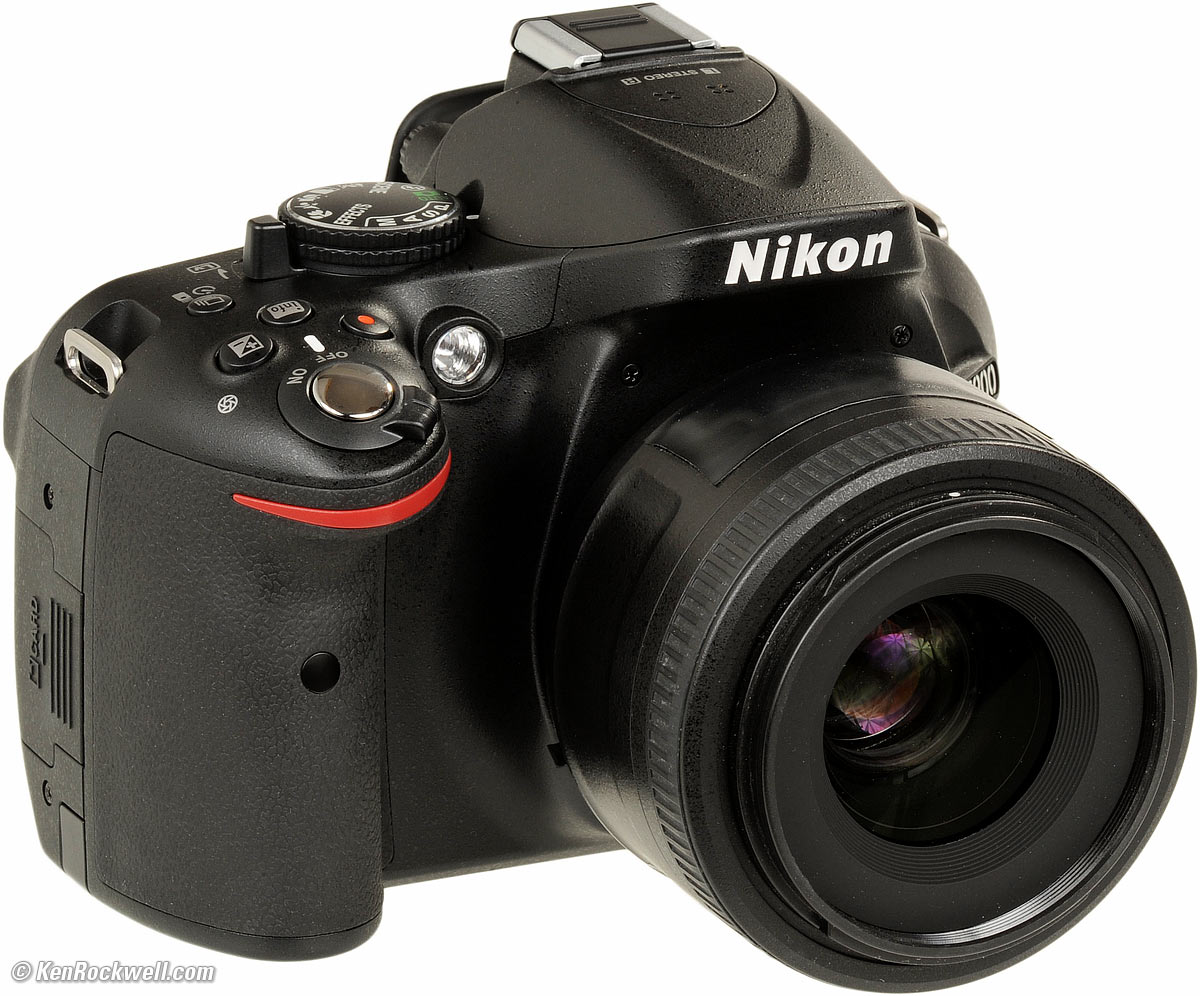
Nikon D5200 and 35mm f/1.8 DX.
06 November 2012: 24 MP DX, 5 FPS, 3" flippy LCD, 1080p video, 19.vi oz. (555 g) with battery and SD card. (The states release was delayed until 08 January 2013.)
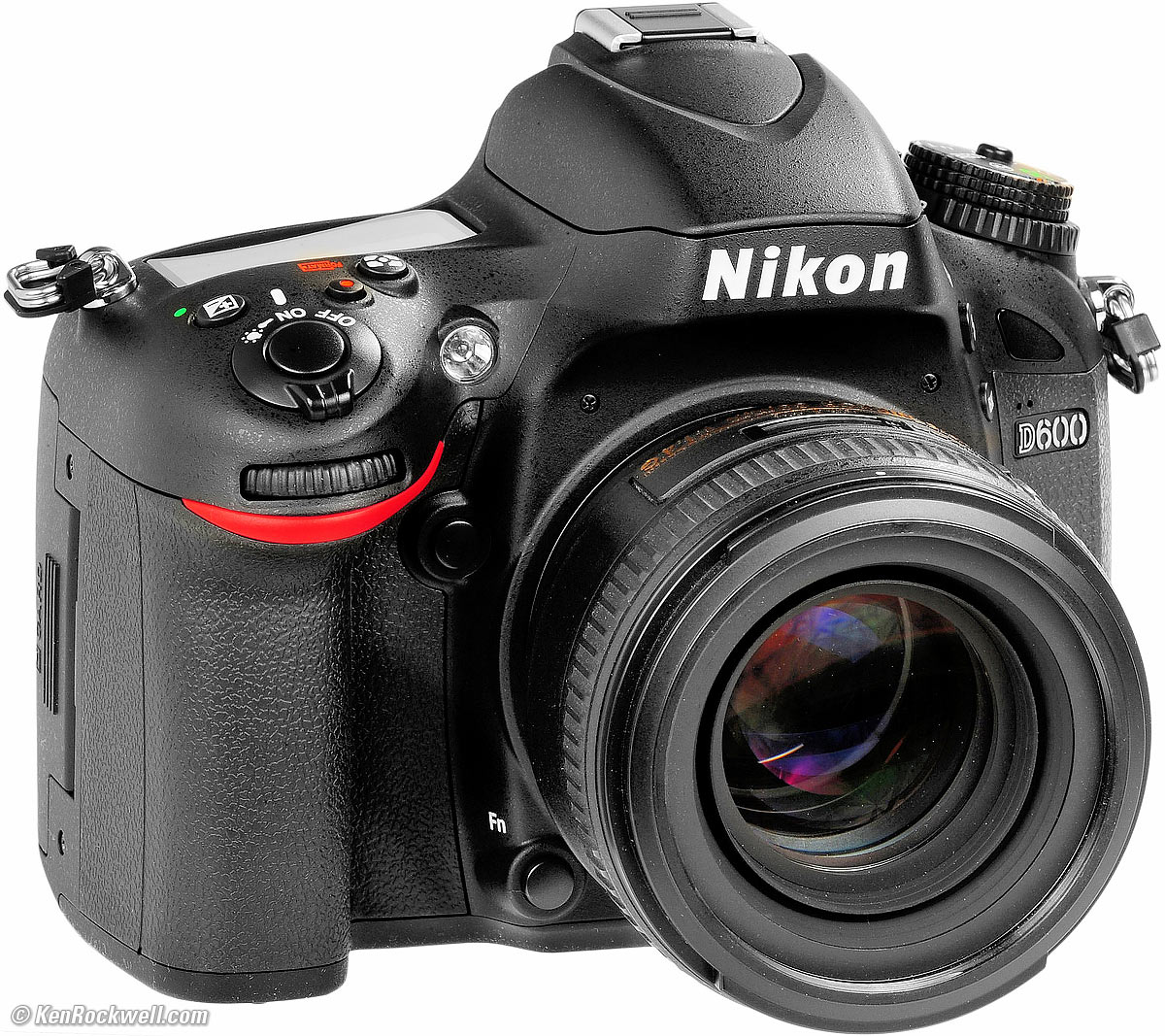
Nikon D600 and 50mm f/1.four Grand.
13 September 2012: 24 MP FX, $2,099, five.5 FPS, 3.2" LCD, 1080p video, 30.0 oz. (850g) with battery and SD card.
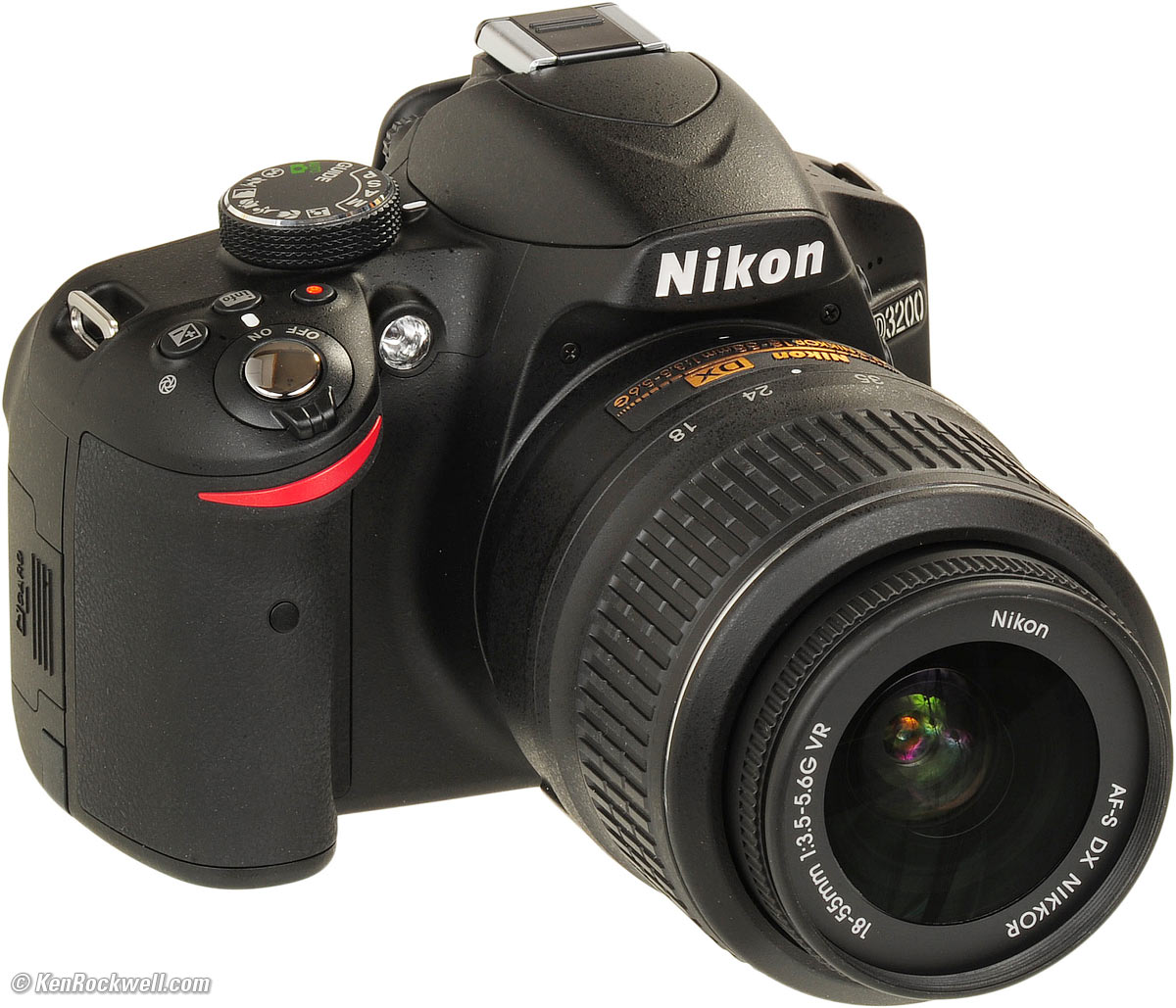
Nikon D3200 and xviii-55mm DX VR.
19 April 2012: 24 MP DX, $700 with 18-55mm VR, iv FPS, iii" LCD, 1080p video, 26.9 oz. (498g) with bombardment and SD card.
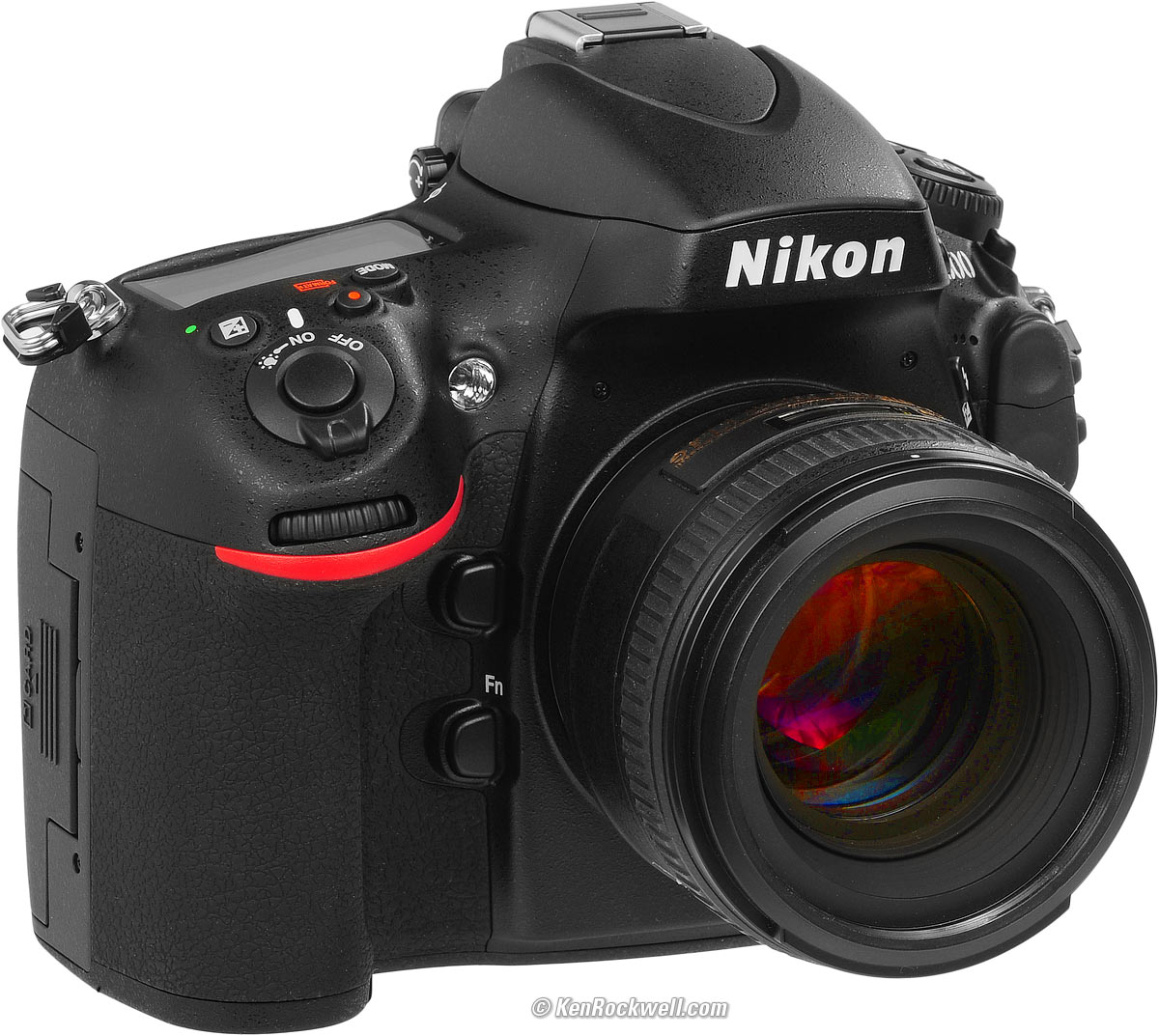
Nikon D800 and D800E and 50mm f/1.4 K.
07 February 2012: 36MP FX, $iii,000 and $three,300, 4 FPS, three.two" LCD, 1080p video, 35.ane oz. (994g) with bombardment and SD carte du jour.
The D800 completely rewrites the volume, and obsoletes almost of Nikon'south DSLR line. Yipee!
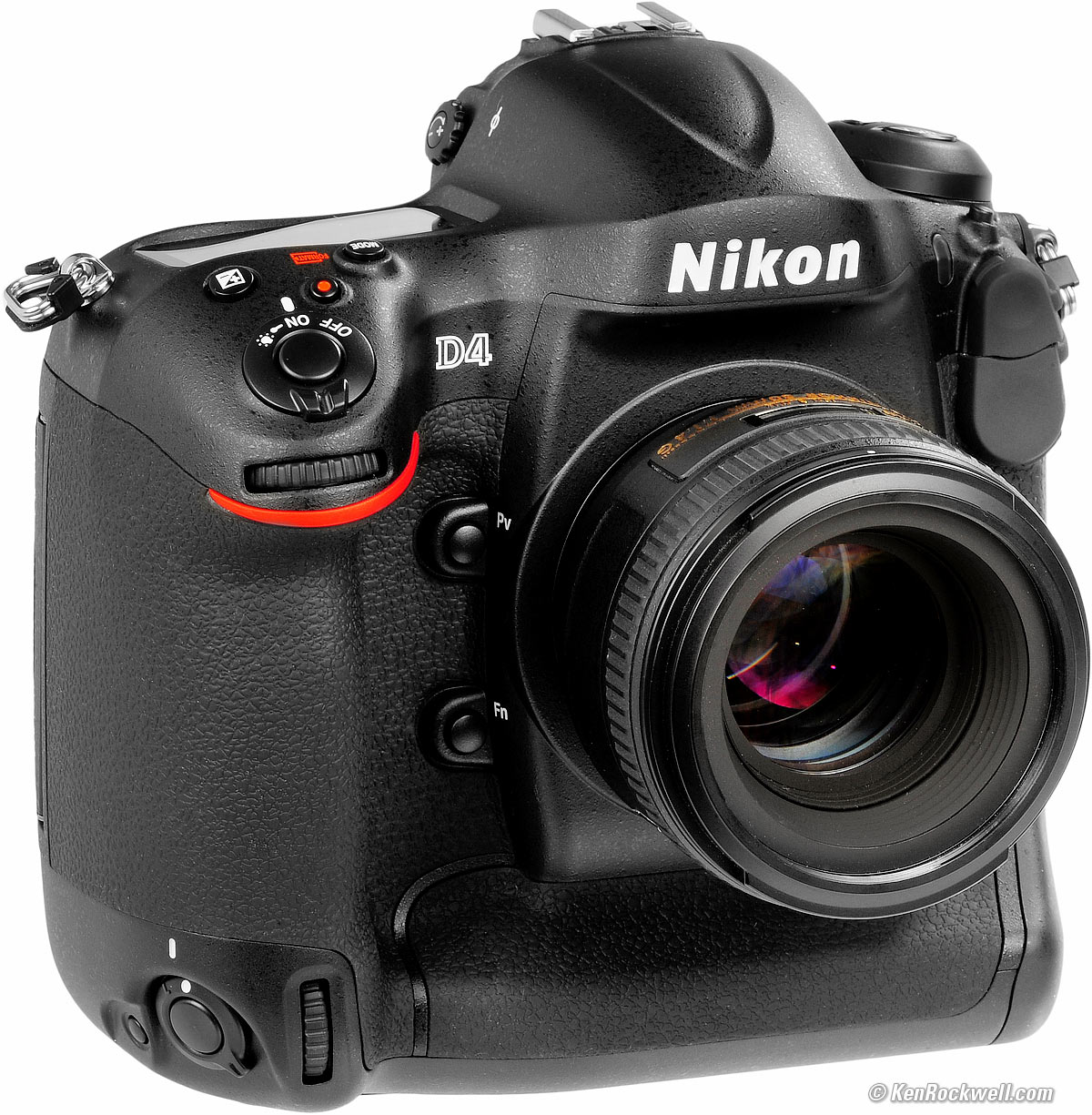
Nikon D4 and 50mm f/one.iv Thousand.
06 January 2012: 16MP FX, ten FPS, 47.three oz./1,337g, $6,000. Pretty much only a D3¼ with less weight, more than FPS, no big deal. What can exist a big deal is the removal of the rear AF-area fashion switch, replacing it with a button and dials instead.
2011
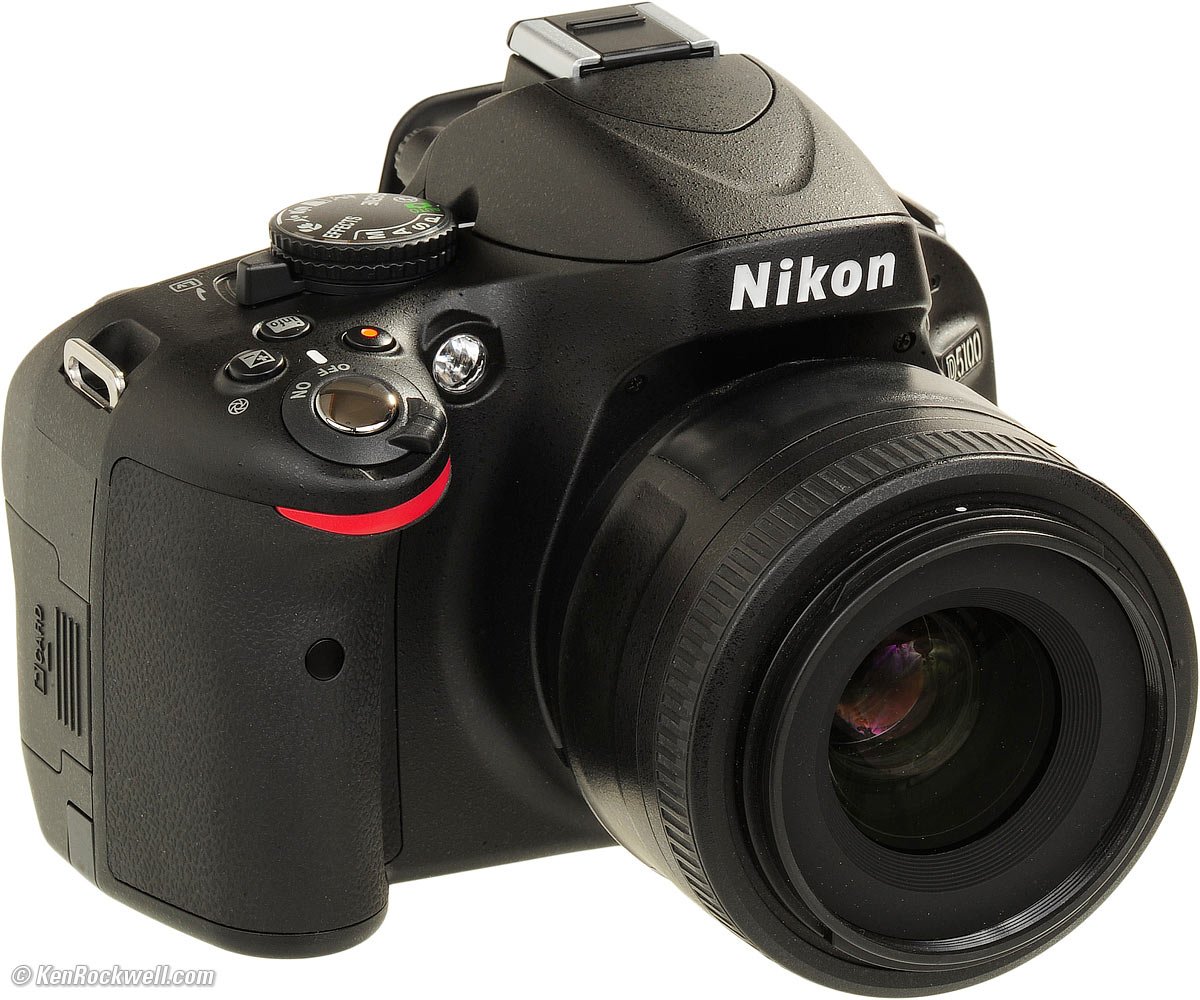
Nikon D5100 and Nikon 35mm f/1.eight DX.
05 Apr 2011: Nikon D5100. 16MP DX, 4 FPS, three" flippy LCD, 1080p movies. $799.95, available May 2011.
An updated D5000.
2010
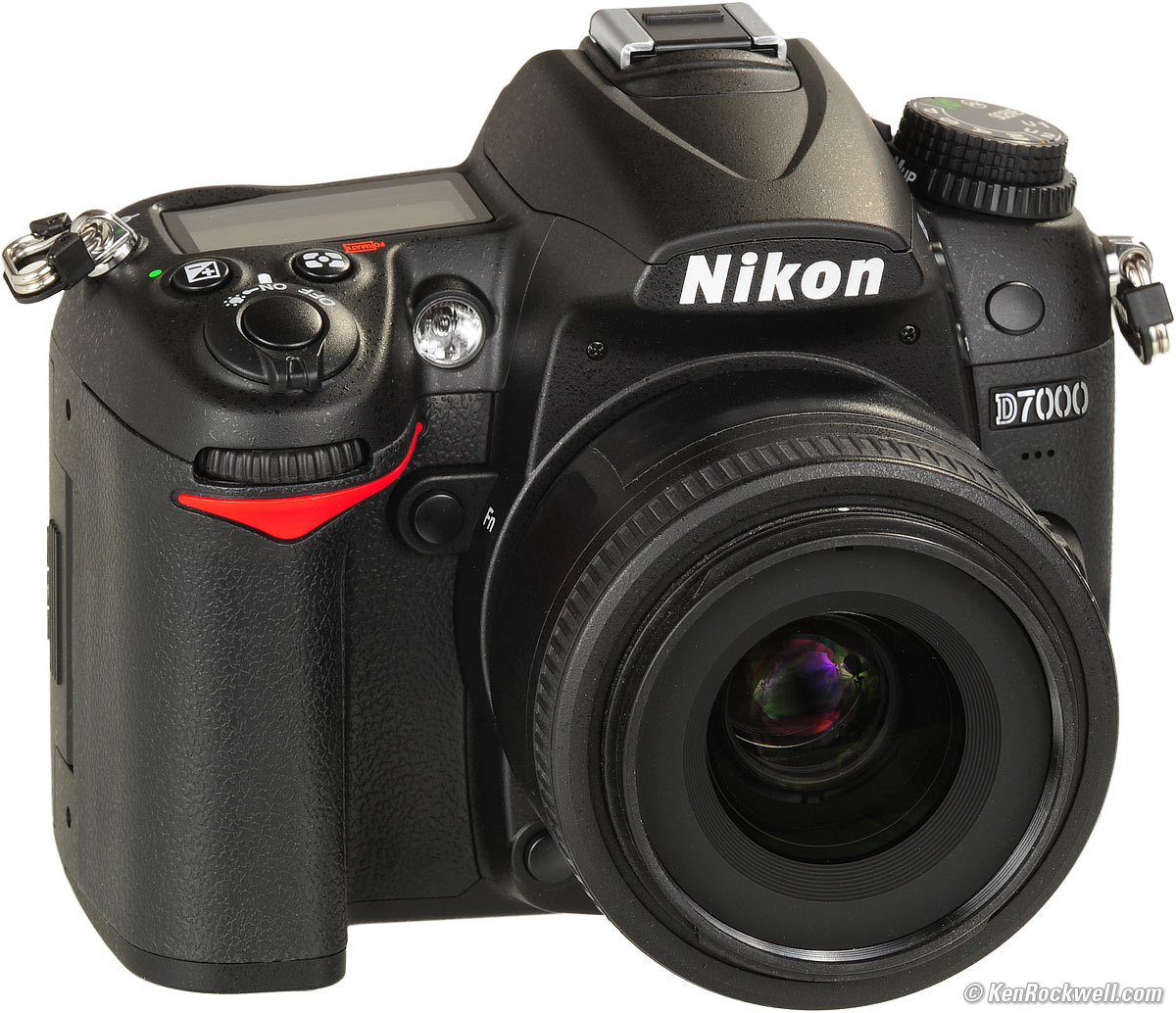
Nikon D7000 and Nikon 35mm f/i.8 DX.
15 September 2010: Nikon D7000. 16MP DX, vi FPS, 3" LCD, movies. $ane,199.95, available mid-October 2010.
New in the D7000 is ii SD bill of fare slots, Nikon's first 2,016-segment RGB meter, 2 new programmable way-dial positions, U1 and U2 (as copied from Canon's C1 and C2 instant-recall settings), a 39-point AF system, and 2 types of Auto White Rest.
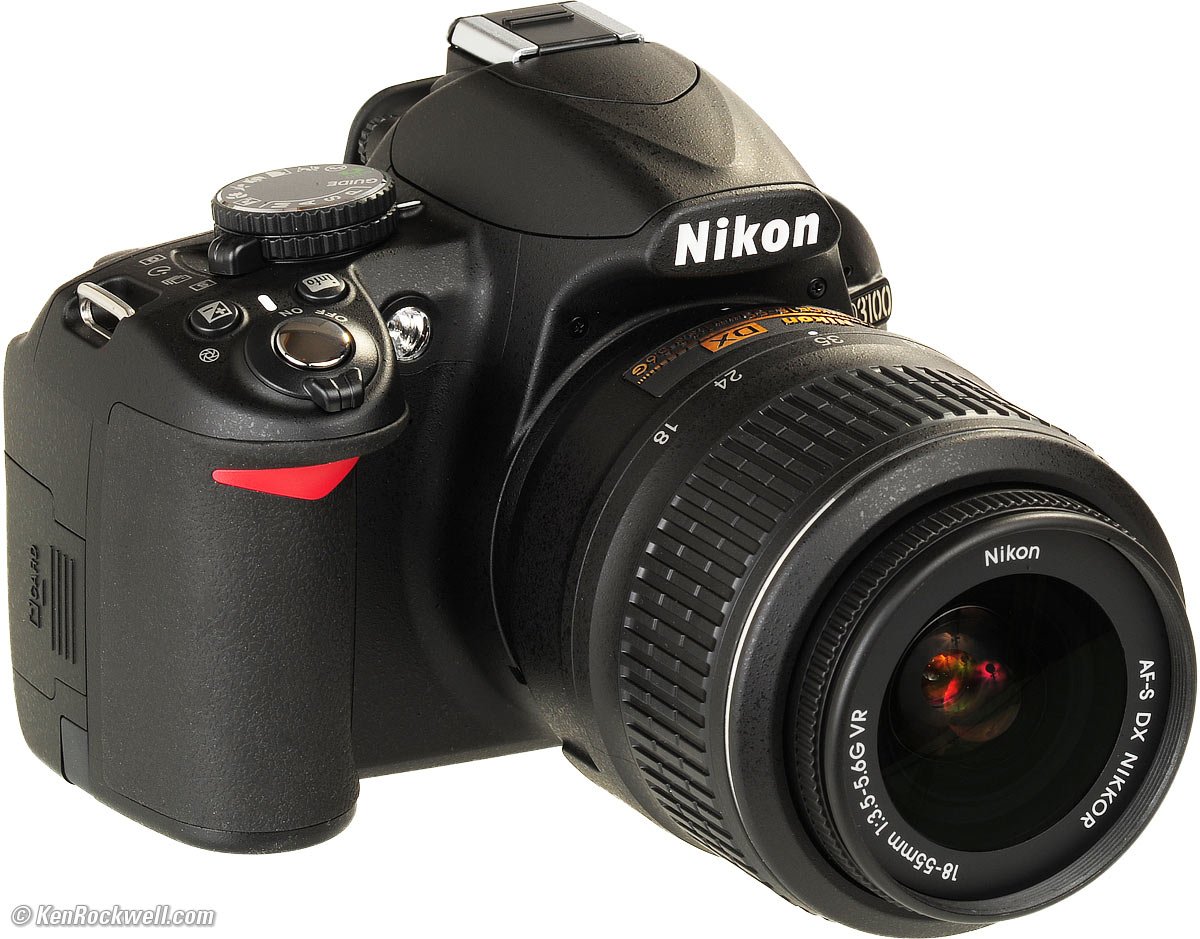
Nikon D3100 and eighteen-55mm DX VR.
xix August 2010: Nikon D3100. 14MP DX, 3 FPS, three" LCD, movies. $699.95 with 18-55mm VR, available mid-September 2010.
2009
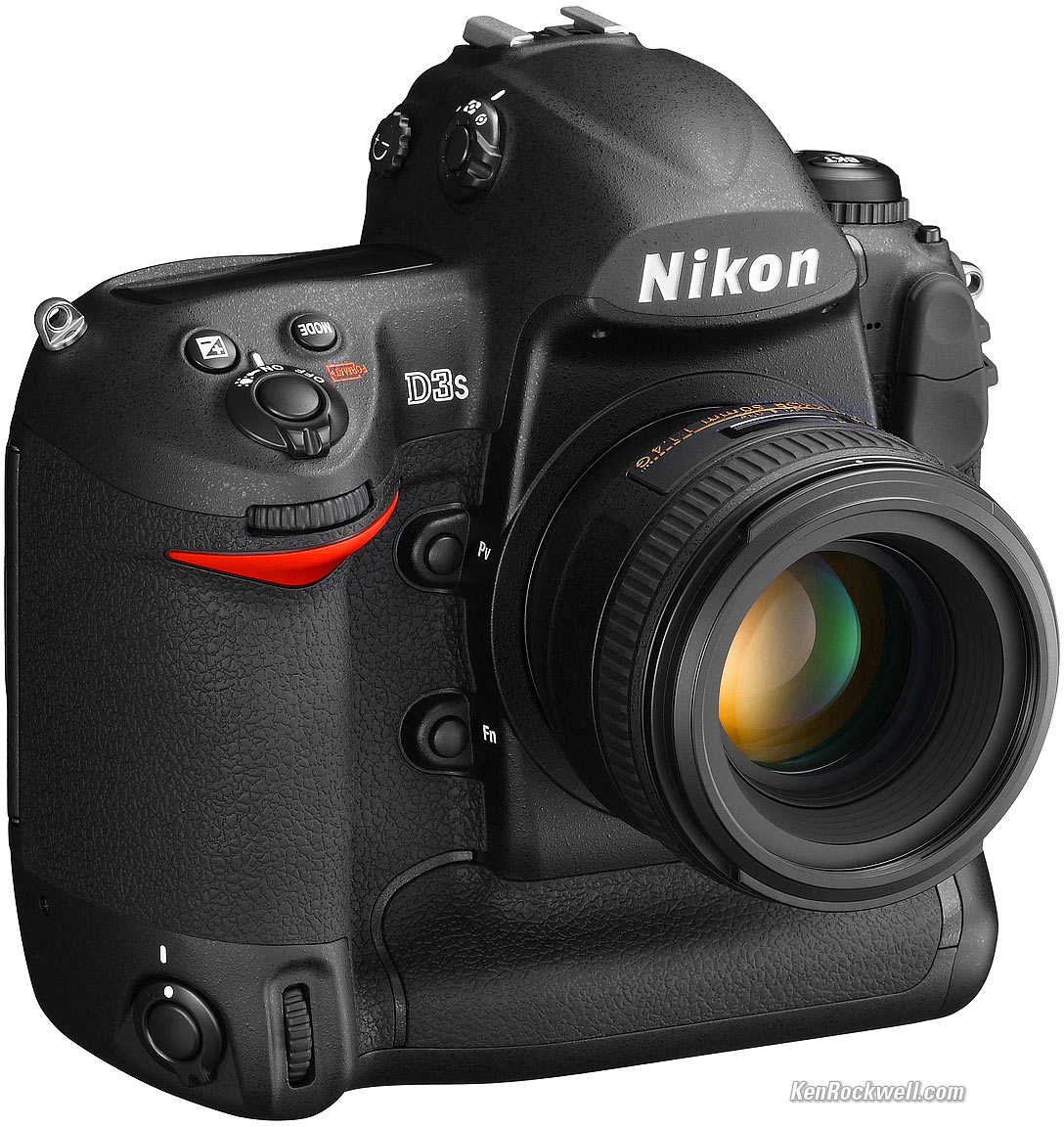
Nikon D3s and 50mm f/1.4 G.
xiv October 2009: The Nikon D3s is simply a mid-product-cycle freshening of the D3. Both are 12MP FX 9FPS cameras. Price is $v,200.
The D3s adds video, a sensor cleaner, an additional i.2x 8MP crop mode, dedicated INFO and Live View buttons, Serenity Mode, stupid-high ISOs to ISO 102,000, and $300 to the cost of the D3.
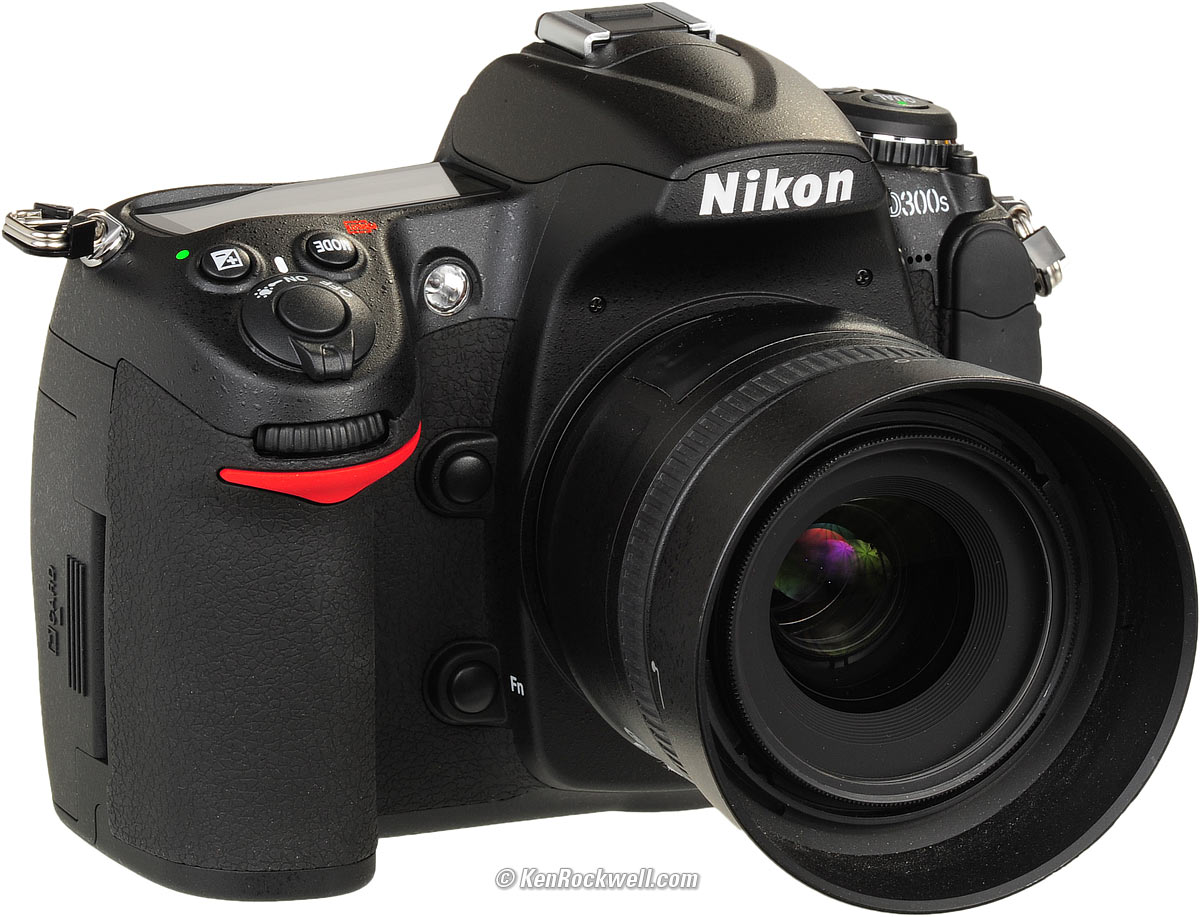
Nikon D300s and Nikon 35mm f/one.8 DX.
xxx July 2009: The Nikon D300s adds movies, a dedicated INFO push button and the QUIET fashion to the D300.
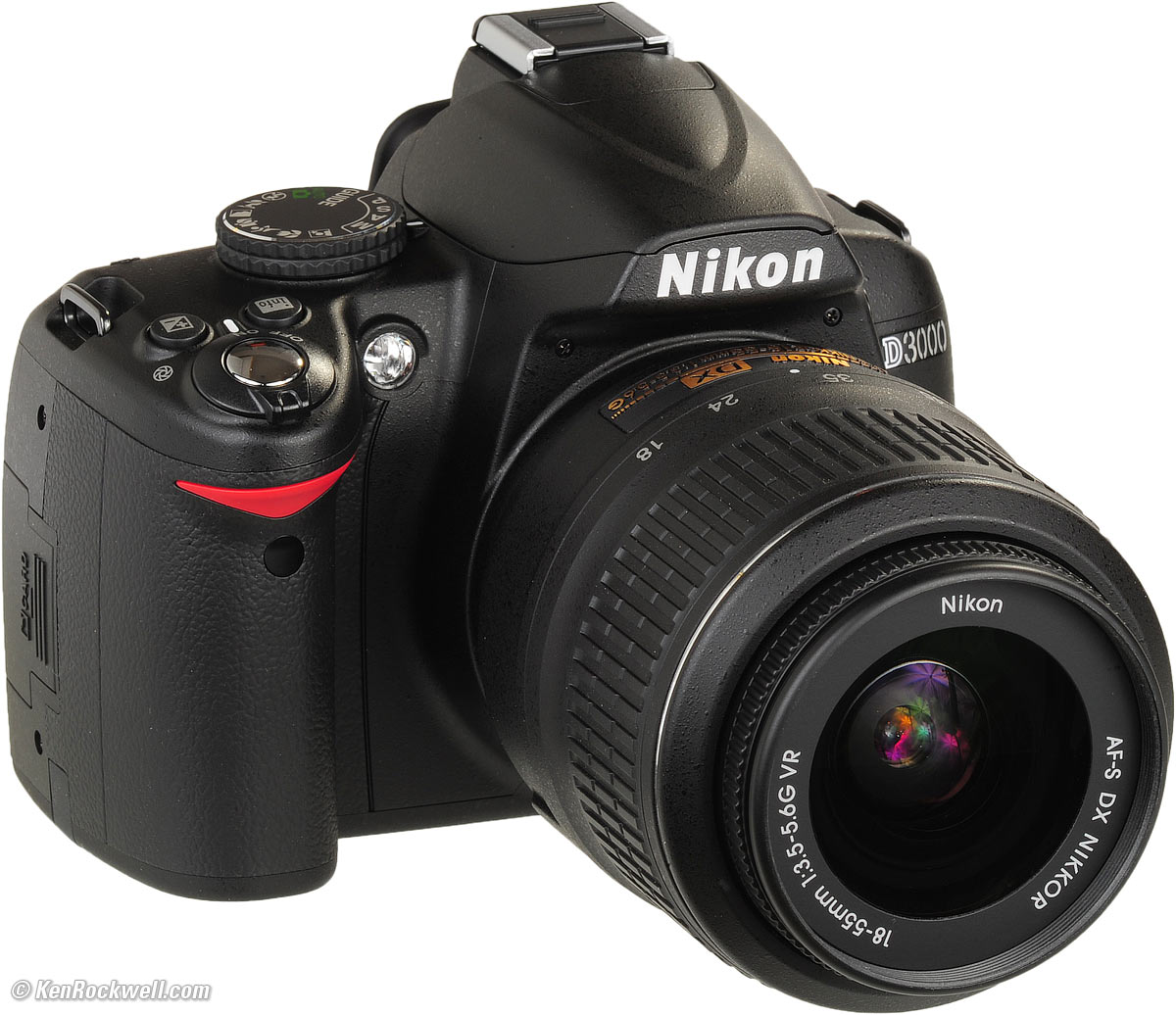
Nikon D3000 and xviii-55mm DX VR.
xxx July 2009: The Nikon D3000 has a low-resolution 3" LCD and 10MP DX for $599, including an excellent 18-55mm VR lens. Information technology's the worst Nikon DSLR ever made because it has very irksome operation in most utilise, and has poor performance at high ISOs. The D40 of 2006 is superior and costs less.
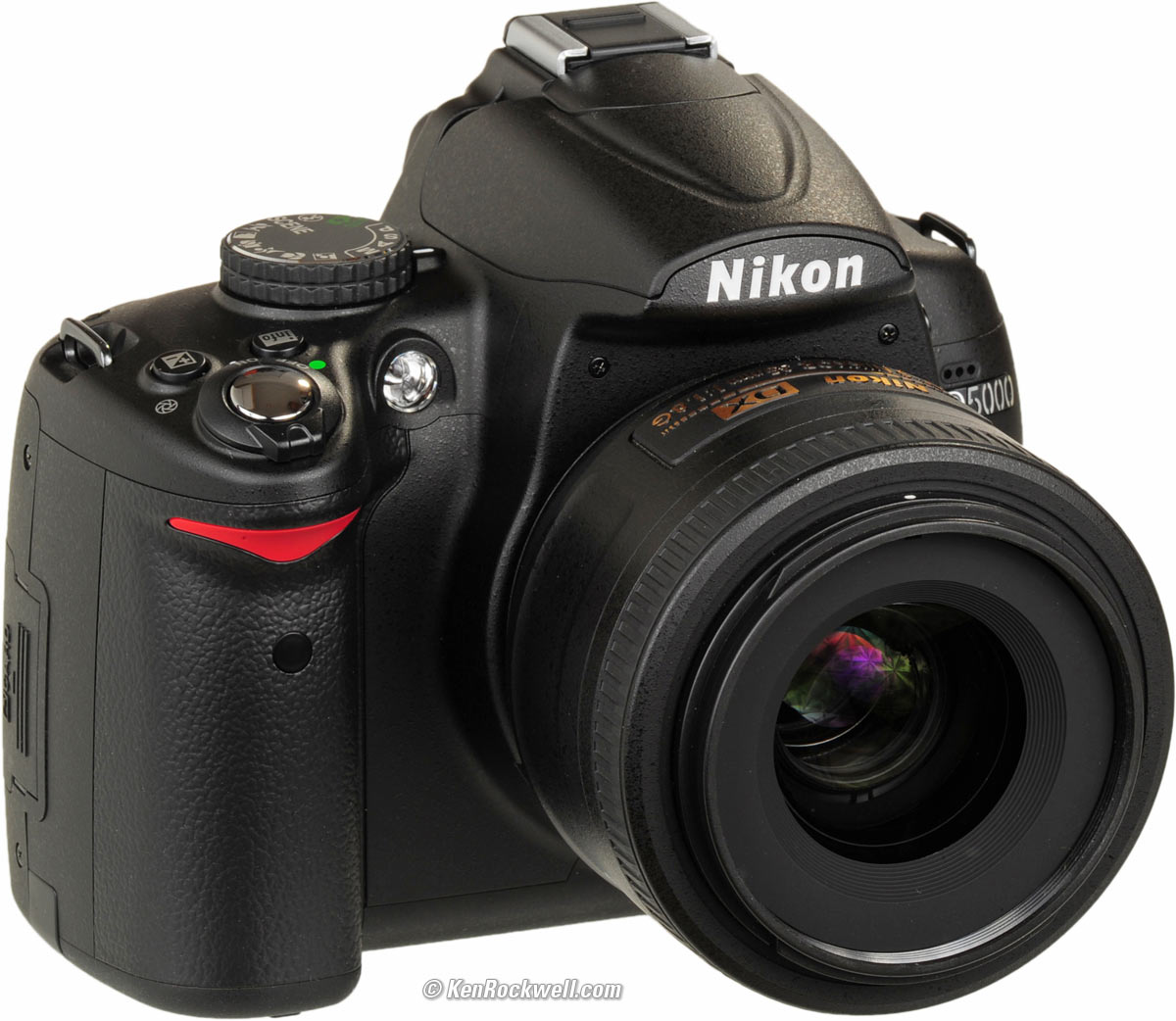
Nikon D5000 and Nikon 35mm f/one.8 DX.
fourteen April 2009: The Nikon D5000 adds a flippy LCD screen, movies and 12MP DX for $730. It'south slotted beneath the D90 but to a higher place the D40 from 2006.
2008
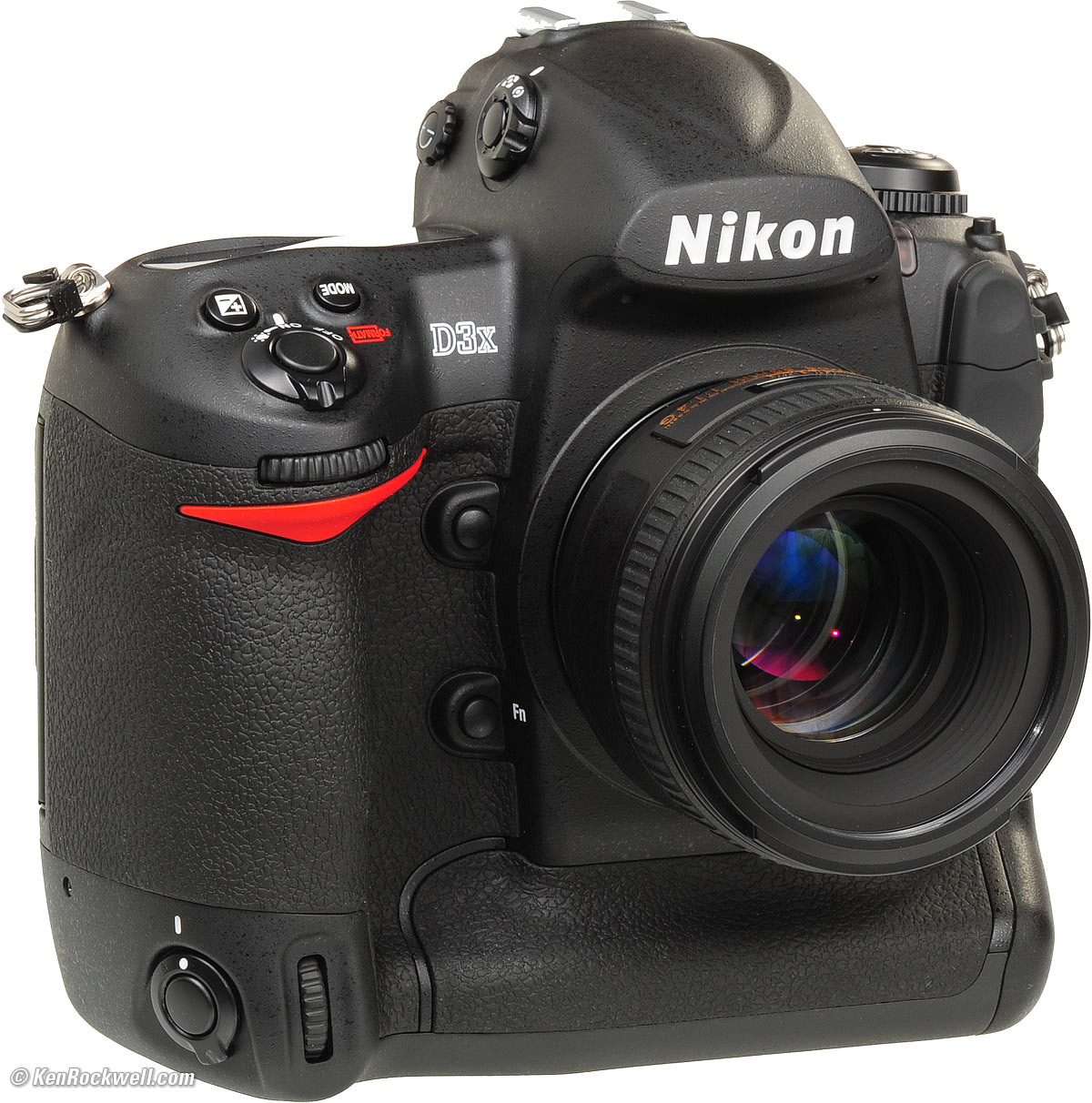
Nikon D3X and 50mm f/ane.four G.
01 December 2008: The D3X is appear. It'due south identical to the original D3, except with 24.4MP and just 5FPS and lower ISOs.
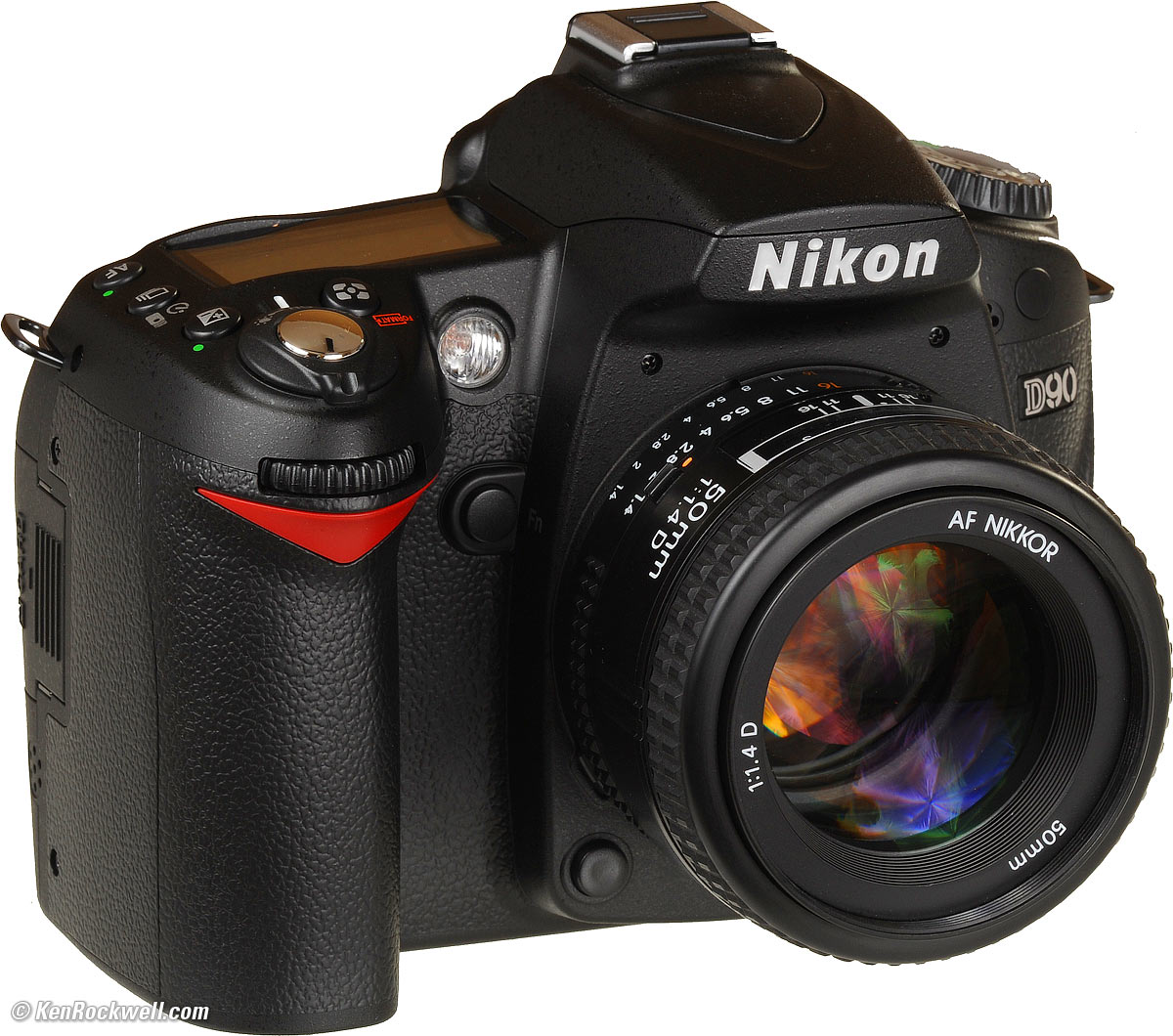
Nikon D90 and 50mm f/1.4 AF-D.
27 August 2008: The D90, a 12MP DX mid-line DSLR for $999. Replaces D80, and is a huge improvement over the D80 because it jumps to Gen two.
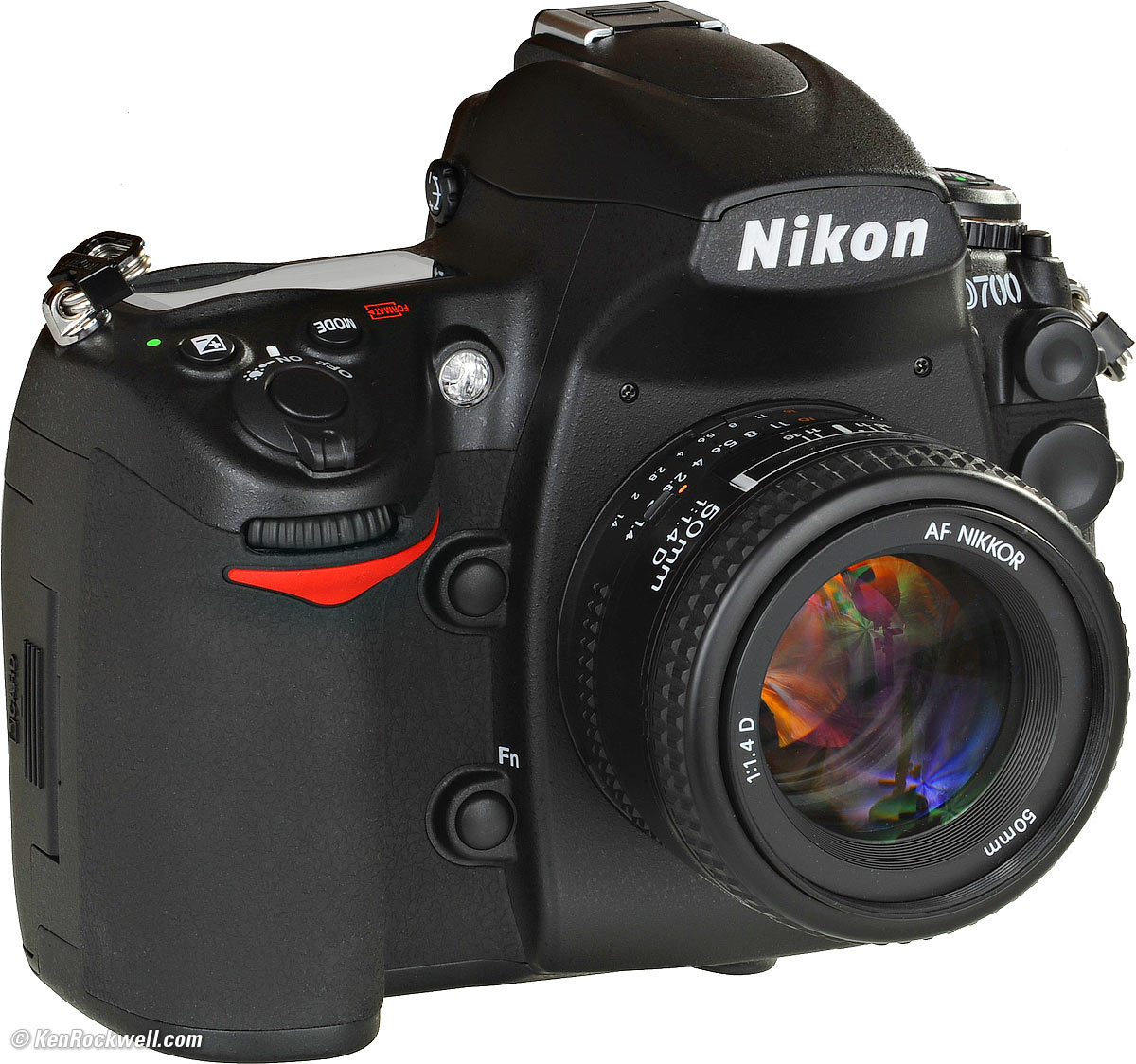
Nikon D700 and 50mm f/1.4 AF-D.
01 July 2008: The D700, a 12MP FX DSLR for $two,999.95. It's Nikon'southward top apprentice camera.
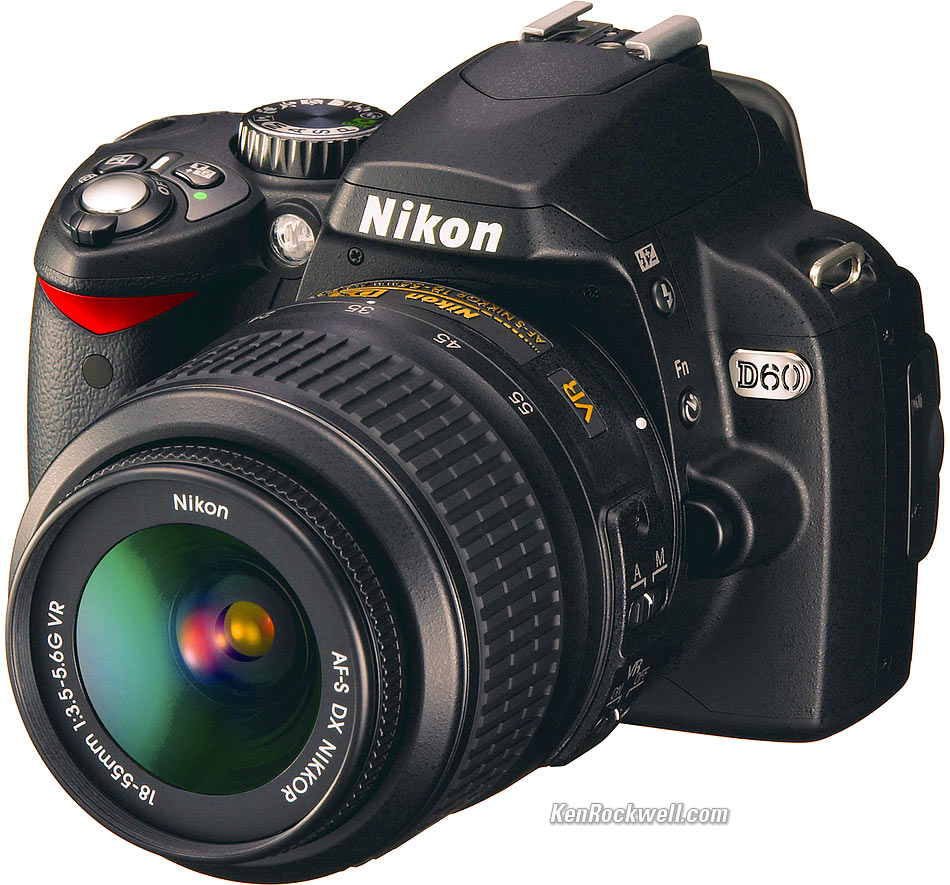
Nikon D60 and 18-55mm DX VR.
January 28, 2008: Nikon D60 announced. Replaces D40x. DX
2007
Generations
At that place are vast differences in real prototype quality betwixt Nikon's two generations of digital cameras.
Similar most marketing organizations and repressive governments, camera makers continue most people in the dark by keeping them worrying about easy-to-empathize things which make no divergence, like pixels and ISOs which are like shooting fish in a barrel to describe with just ane number, instead of trying to teach people what really matters, which are the subtleties of how a motion-picture show actually looks.
Because photographic camera makers accept the masses worrying about pixels and flake depths, when Nikon makes pregnant advances, they're unremarkably not obvious behind all the fluff.
The difference between generations is so significant that the best Gen one photographic camera, the D2Xs, can't make pictures equally expert as the cheapest Gen two camera, the D90, in most real picture-taking situations.
First Generation
Nikon'south first generation of digital SLRs started with the D1 of 1999 and continues in 2008 with the D40.
The start generation has only archaic picture and white residuum adjustments.
Gen 1 cameras accept an Optimize Image menu with crude controls allowing simply ii rudimentary options of "Enhance (+)" or "Moderate (-)" for saturation, and WB trims that extend but to ±3. There is no light-green/magenta adjustment for WB.
There were meaningless mentions of undefined modes I, Ii and Three in the Optimize Paradigm menu, just no clever dynamic range management as Gen 2 adds.
Gen 1 cameras are the D1 and D2 series, D40, D40x, D50, D70, D70s, D80, D100 and D200.
2d Generation
Nikon's 2nd generation DSLRs started coming out in 2007 with the D3 and D300.
Second generation cameras offer the potential of significantly ameliorate real paradigm quality considering Gen 2 cameras add Nikon's Adaptive Dynamic Range (ADR).
Presuming its turned on, ADR allows Gen 2 cameras to render most real scenes much closer to the way our eyes see them, without all added dissimilarity, blown highlights and blocked shadows mutual on moving-picture show and Gen one cameras for most people.
If you're a pro who knows how, and really controls his lighting perfectly, then you tin get bang-up results on Gen 1 cameras, but for most people who don't, Gen two cameras will requite significantly better pictures.
The D90 has ADR on by default, and the D3, D700 and D300 need it turned on in the menus. I e'er shoot my cameras with ADR in NORMAL (or Auto if bachelor) for every shot.
Gen 2 cameras besides are Nikon's first cameras to allow a full range of saturation and other image adjustments. Saturation and other values are set in direct units of up to ±iii. These are set in the Pic Controls menus.
Gen ii cameras accept WB trims which extend 6 units in each direction, marked in blue and amber (not + and -) and allow green/magenta adjustment.
Gen 2 cameras offer five manual preset (gray bill of fare) WB storage settings, complete with icons and notes.
Gen 2 cameras magically and automatically correct color fringes caused by most lenses. If you're a tweaker, this alone significantly improves corner sharpness.
| | |
| | The Gen 2 D90 is far, far meliorate than the Gen ane D200. I didn't have a D2Xs for comparing, but it would exist the same every bit the D200. These shots are crops from the corner with the 18-200mm VR at 18mm. The D90 is as sharp as the D300. The D90 was focused elsewhere in this example. |
Gen 2 cameras are using the increased in-camera processing horsepower to exercise all these tricks. If you're wasting your fourth dimension shooting raw, you will take to promise that whatever software you're using to open up raw files is as smart equally what Nikon is edifice into these cameras for free. Many off-brands of software can't do any of this.
At that place was never much reason for raw, and in Gen ii, even less. It'southward quite probable that using raw with a Gen 2 camera and most, if not all, software, will throw you lot back into Gen i quality. Information technology'south not 2006 anymore. Nearly raw software does non practise any of the clever things, like ADR, expanded colour controls or totally automated lens corrections, that are done in-camera.
Gen 2 cameras also take a super-sharp new 3" LCD screen.
Gen 2 cameras are the D3, D700, D300 and D90.
The D60 has ADR, but its stuck with the old Optimize Paradigm card and none of the other Gen two additions, then telephone call it Gen ane.1 if you insist. I'm calling it Gen ane.
The D3000 has ADR and Gen II Picture Controls, just it has a crummier 3" LCD screen and does not correct lateral color fringes, so I'll call it Gen 1.five.
2007
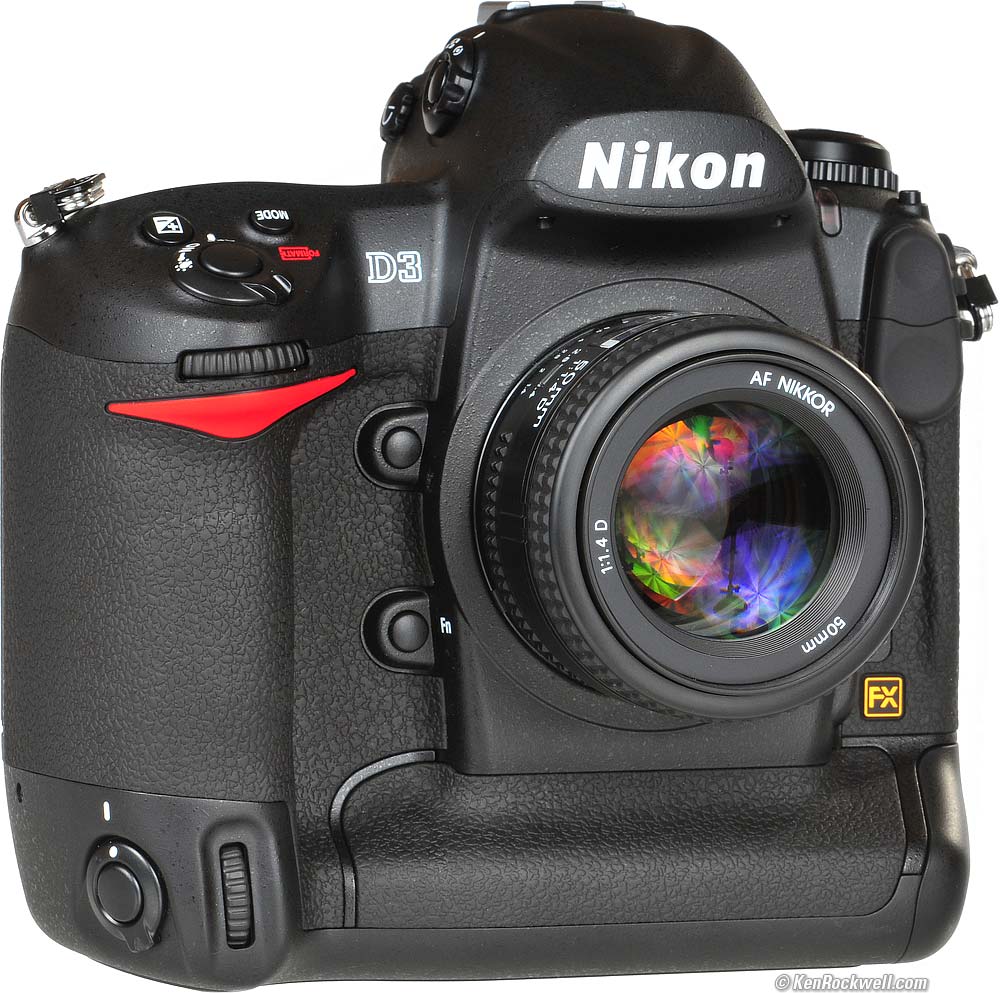
Nikon D3 and 50mm f/one.4 AF-D.
23 August 2007: The D300 and D3 are announced for November sale. Both have new 3" LCDs with live viewing.
The D3 is another milestone with Nikon's outset 24x36mm sensor, dubbed FX. It runs 9FPS for $5,000. The D3 replaces the D2Xs. Nikon's press release on the D3.
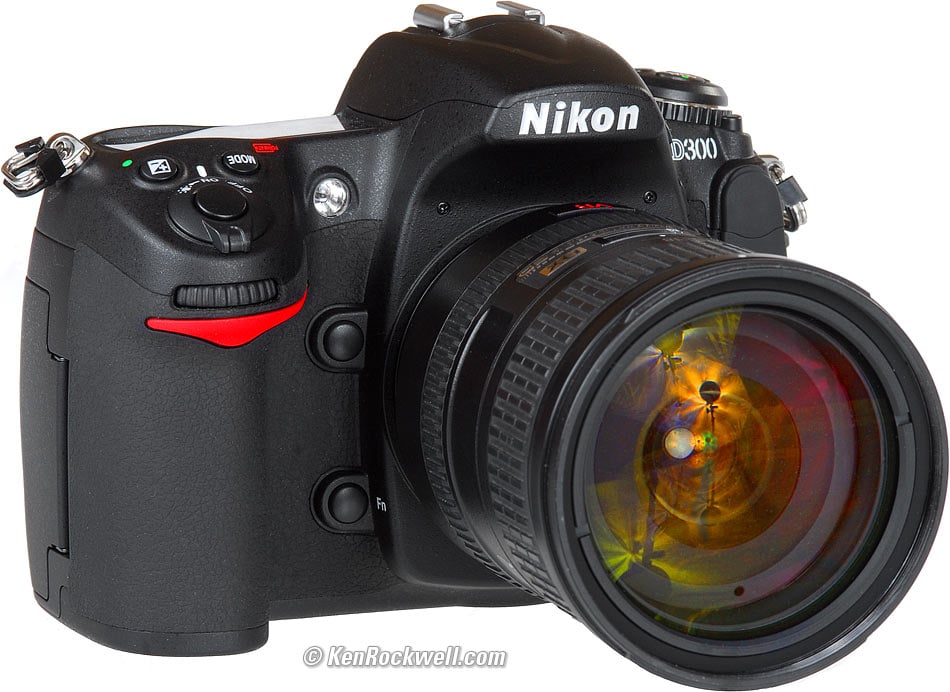
Nikon D300 and 18-200mm VR DX.
The D300 is an evolution of the D200, at present with a 12MP DX sensor and six-eight FPS for $i,800. $1,800 oddly is a price increment $300 over the D200. The D300 replaces the D200. Nikon's press release on the D300.
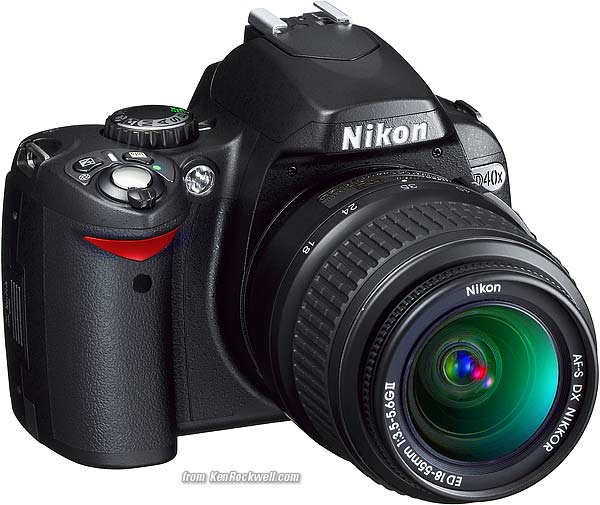
Nikon D40x and 18-55mm DX Two.
05 March 2007: The D40x is appear to make full a vacant cost point in Nikon's line. Information technology is the aforementioned every bit the excellent D40, merely with 10MP DX instead of 6MP, but a slower sync speed of 1/200 vs. 1/500, a slower default ISO of 100 vs. 200, and a $200 college price than the D40. The D40x was introduced to let Nikon fill in a cost point in its camera line for competitive purposes. Personally I prefer the less expensive D40. Run into also the Megapixel Myth.
2006
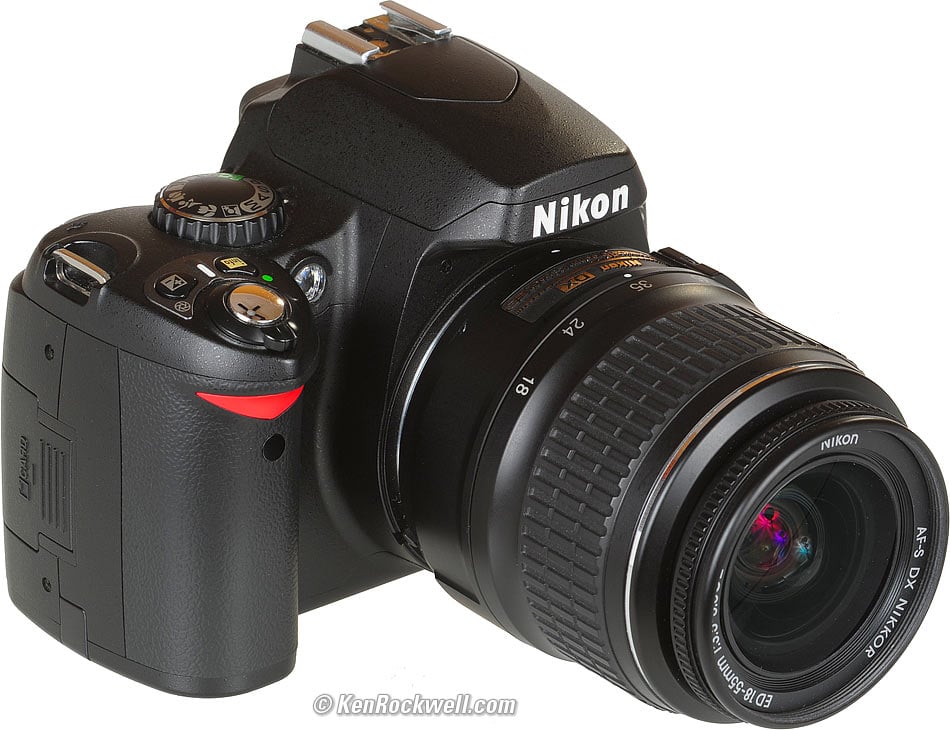
Nikon D40 and 18-55mm DX II.
16 November 2006: The D40 is appear for Christmas at $599 with included excellent 18-55mm II lens. It is the smallest, lightest and least expensive Nikon DSLR ever. It started shipping on November 30th, 2006. 6MP DX.
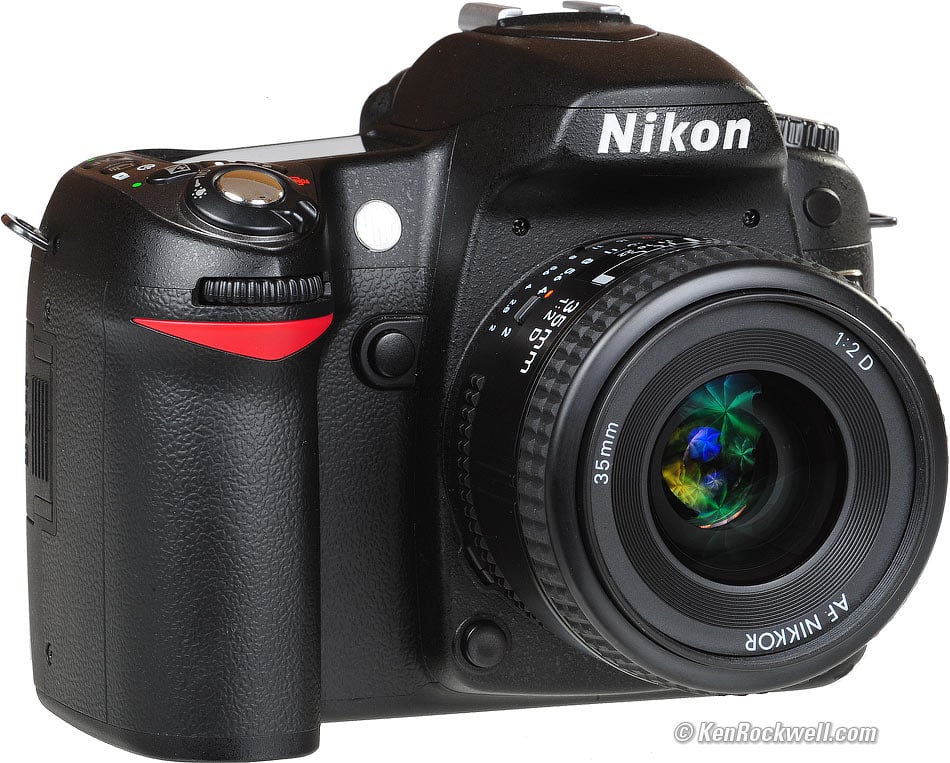
Nikon D80 and 35mm f/2 AF-D.
09 August, 2006: The D80 is announced. 10 MP DX, iii FPS for $999. The D80 is a D70 torso and mechanics with the sensor and LCD of the D200.
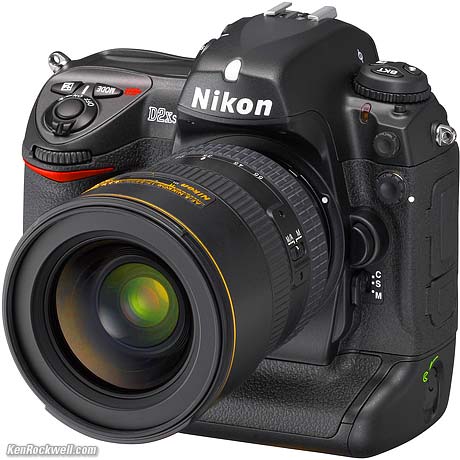
Nikon D2Xs and 17-55mm f/two.8 DX.
June 2006: The D2Xs is announced, a slight comeback to the D2X. Same 12 MP DX and 5FPS and weird crop manner. $iv,700.
2005
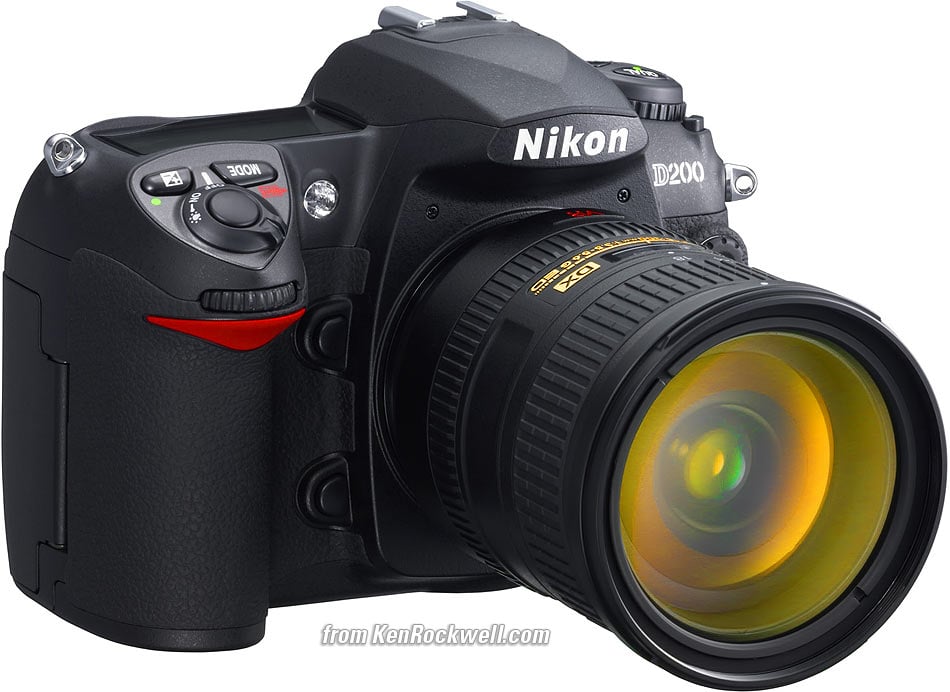
Nikon D200 and 18-200mm VR DX.
01 November 2005: the D200 is appear. It's a groundbreaker at 10MP DX and v FPS at $ane,699. It shipped in December 2005 as promised. Information technology was on backorder until about October 2006. The D200 starts a new level in the Nikon line between the plastic D70 and the pro D2X.
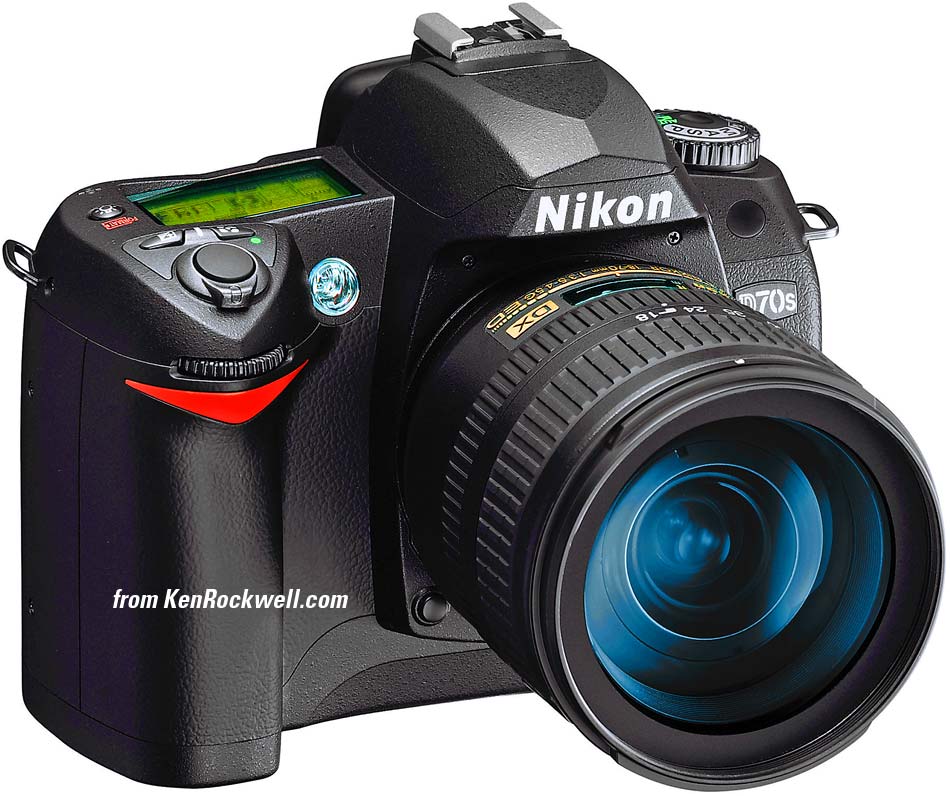
Nikon D70s and 18-70mm DX.
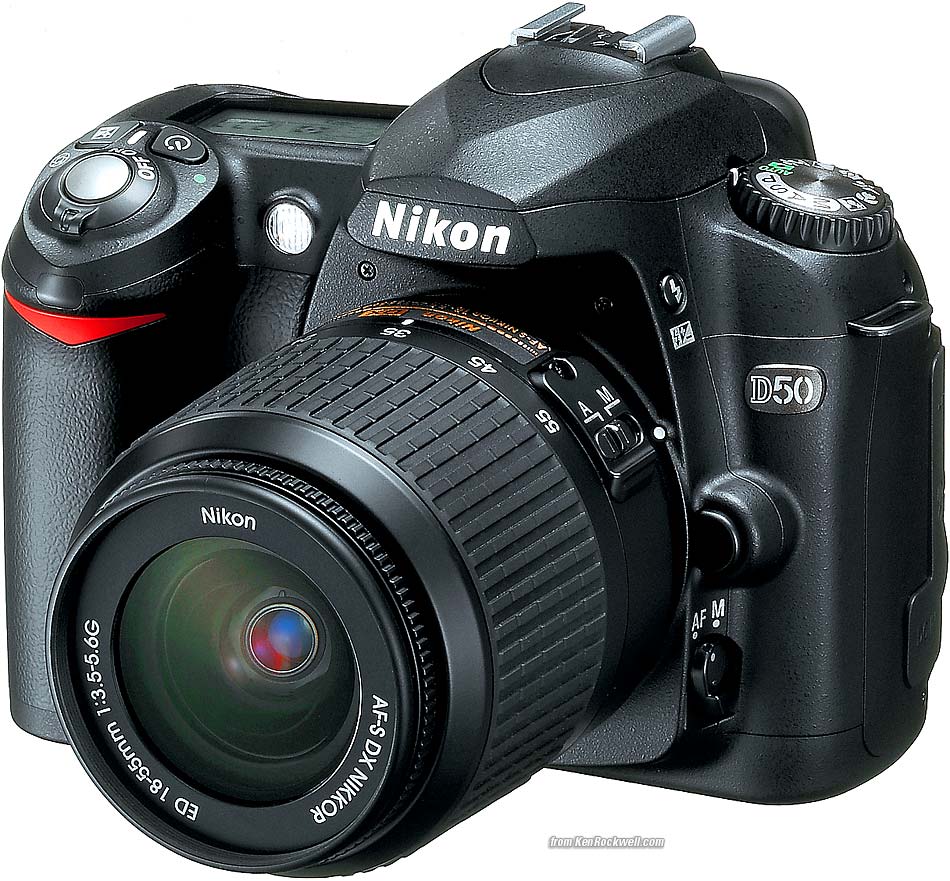
Nikon D50 and 18-55mm DX.
22 April 2005: The D70s and D50 are introduced. The D70s is a D70 with slightly larger screen. The D50 is a D70 with a couple of features removed. The D50 is yet 6MP DX but only 2.five FPS.
The D70, D70s and D50 are great cameras new or used, merely replaced by the two-year-newer D80 of late 2006.
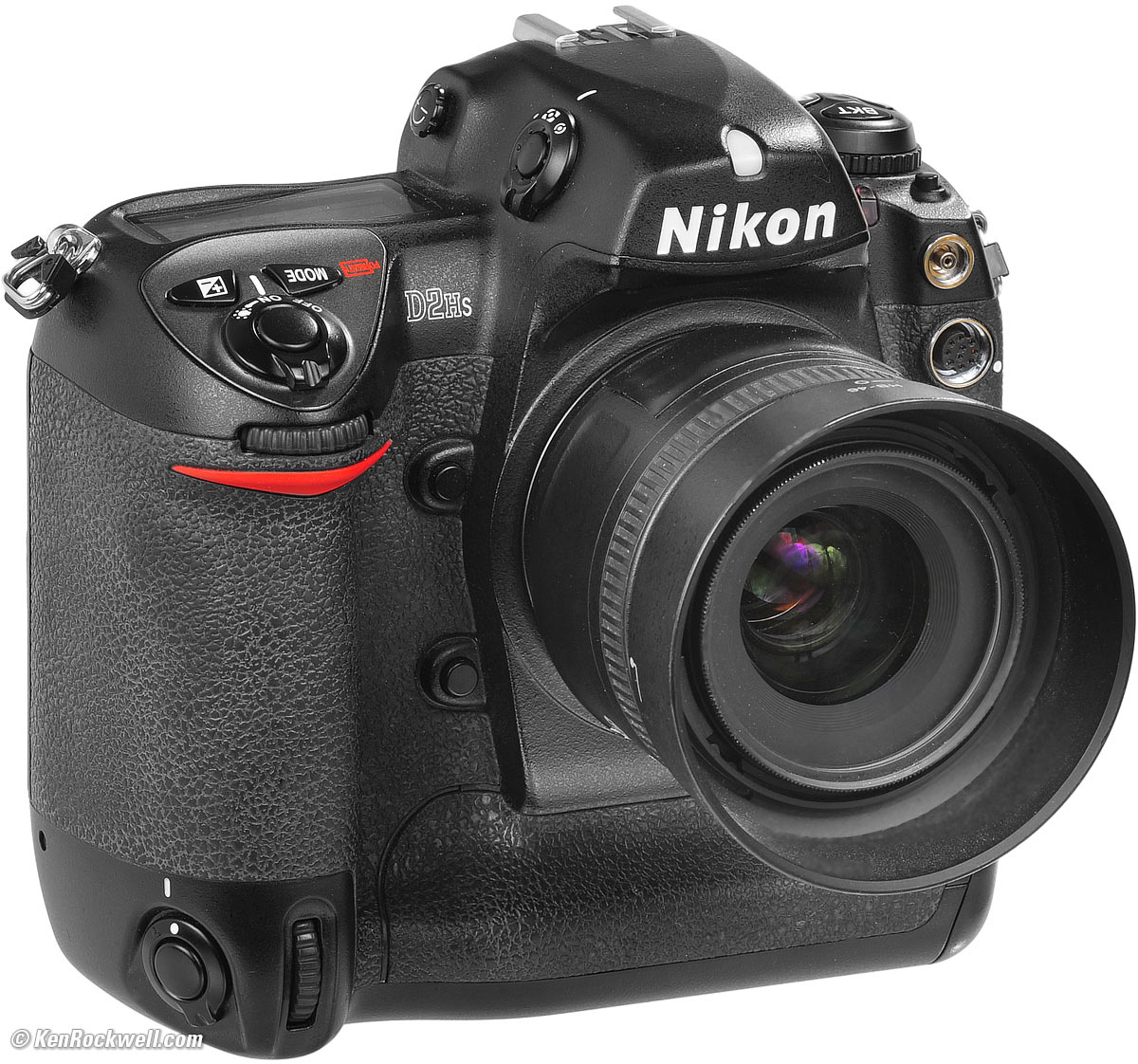
Nikon D2Hs and Nikon 35mm f/i.8 DX.
16 February, 2005: The D2Hs is appear: 8 FPS DX, four MP, two.5" LCD.
It's a minor revision of the D2H at a bargain toll of $iii,500. This makes a used D2H or new D2HS a great buy for sports. They are the same as the more expensive D2Xs, just faster with a few less pixels.
2004
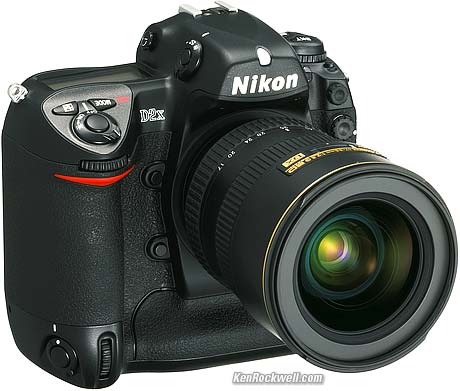
Nikon D2X and 17-55mm f/2.8 DX.
16 September, 2004: the D2X is appear. 12MP DX, 5 FPS, $5,000. The D2X also has a baroque cropped 7 MP, eight FPS mode. Most of what the D2X does is replaced past the D200 in 2005. I'd get a used D2X if the price was right. It's Nikon's top of the line. I adopt the D200 for smaller size and a couple of more features.
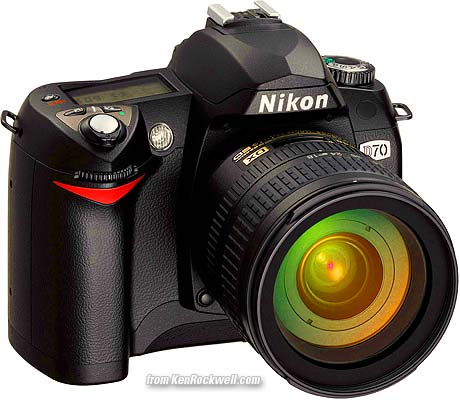
Nikon D70 and xviii-70mm DX.
February 2004: Nikon shows the D70 at PMA. It'southward lightweight, 6MP DX, 3 FPS and a groundbreaker at $999. The D70 is a huge improvement over the D100 in almost every way except having no accessory vertical grip. All this, and it's priced less, also! The D70 fixes the grit problem by moving the CCD filter further abroad from the CCD. This throws dust out of focus and makes information technology much less of an badgerer than on the D1 series cameras.
The D70 replaced the D100.
Nikon was going to discontinue the D100, just instead decided to keep making the D100 considering they discovered they could get a college price than the D70 only because of the model number. People who equated price with quality kept buying D100s because they price more.
2003
December, 2003: Nikon announced the development of the D70. Nikon had little to say other than the D70 would be cheap. Nikon was still inventing the D70 and had none to sell. Nikon made the announcement to get people to wait instead of fleeing from Nikon to Catechism'due south inexpensive Digital Rebel.
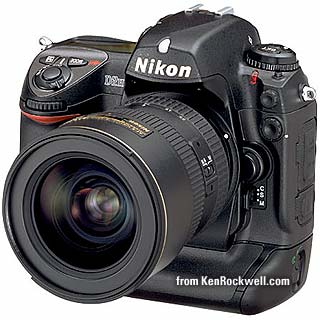
Nikon D2H and 17-55mm f/2.viii DX.
22 July, 2003: The D2H is announced. 4.1 MP DX, 8 FPS, $5,000. The D2H was a new design with a much improved Li-Ion bombardment and a new flash exposure system. The D2H is a bargain used and a fantastic camera for sports.
2002
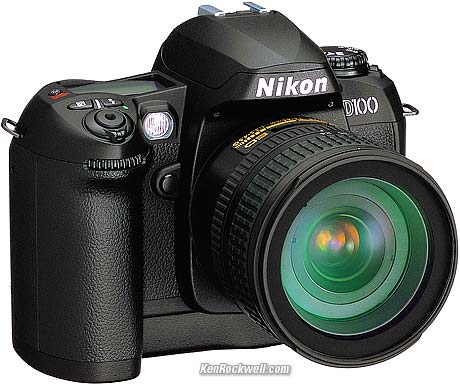
Nikon D100 and eighteen-70mm DX.
21 February, 2002: The D100 is appear. It'due south six MP DX and three FPS for $1,999. This is Nikon's start lightweight apprentice DSLR photographic camera. Information technology was an N80 with digital guts. Information technology wasn't available for sale until June, 2002. Information technology was a sellout with long waiting lists for a year after its introduction.
In May 2003 the D100 dropped to $1,699. In December 2003 it dropped to $i,499 where it stayed for a year or 2. In May 2005 information technology dropped to $999.
Forget the D100, but snap one upwards if you can get a screaming deal.. The newer D70 and D50 work better. The D100 required messing with a cycle and knob to make disquisitional adjustments. The newer cameras have direct entry buttons. The newer cameras take 2 years of actress wisdom in their firmware and just practice everything improve. Flash exposure isn't very proficient on the D100. See a comparison here. The D100 used the same EN-EL3 Li-Ion bombardment of the D50 and D70.
2001
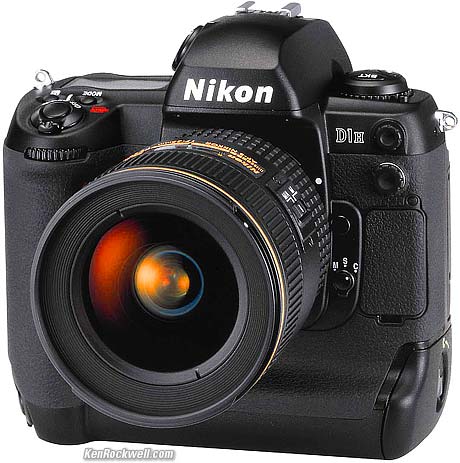
Nikon D1H and 17-35mm f/two.eight. Nikon D1X looks the aforementioned except for model number.
05 February 2001: Nikon announces the D1X and D1H, improvements to the D1. Operation was honed, a few features were added and price remained at $5,000.
They both replaced the numerical carte du jour system with like shooting fish in a barrel to sympathize menus in English.
The D1H kept the ii.7 MPDX sensor and increased speed to 5 FPS.
The D1X slowed to 3 FPS, merely increased resolution to 5.3 MP. The resolution of the D1X is still decent in 2006. It used a bizarre CCD with twice the horizontal pixel density of the D1. Epitome quality was, and still is, extremely good because it had 4,024 horizontal pixels on the CCD. It had to do less Bayer interpolation and thus has much meliorate epitome quality than one would expect in its 3,008 x two,000 pixel images.
Don't buy either of these today regardless of price. They had awful battery systems. I had a D1H. They simply run for about 250 shots on a charge. The batteries are huge, heavy Ni-MH packs which crave constant babying in charging. The packs have protuberances which make them painful to acquit in a pocket. They lose charge if left unused. Fifty-fifty a freshly charged battery would indicate nigh dead after a few shots. Most D1, D1H and D1X users including myself lived with the viewfinder indications turning off, indicating about dead bombardment, after just a few shots. They also had awful wink exposure. Many photographers had to revert to non-TTL exposure modes because the TTL mode was so flaky. Grit was a horrible problem because the CCD cover filter was too close to the CCD. At almost any aperture you'd see grit clearly on the image. They were state of the art in their era (2001 - 2003), merely that era is long gone.
1999:World's Outset Practical DSLR
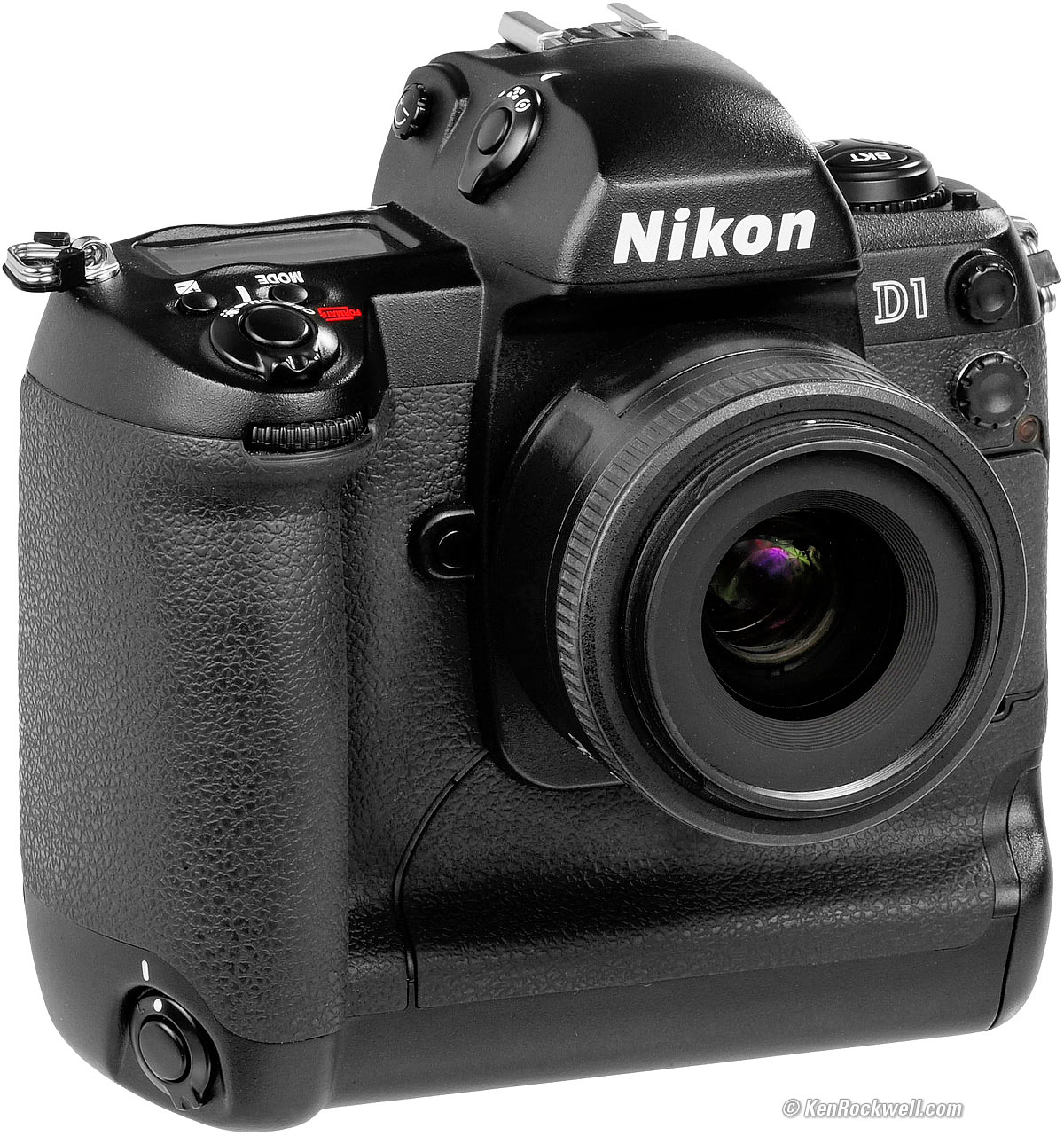
Nikon D1 and Nikon 35mm f/1.8 DX.
15 Feb 1999: Nikon appear it was working on "a new professional class, high-quality digital Unmarried Lens Reflex Camera."
fifteen June, 1999: Nikon announces the D1, the world'southward kickoff applied DSLR. Information technology is the outset practical DSLR considering it'due south the first DSLR with practiced enough image quality for print (ii.7 MP DX), fast enough (four.five FPS) and priced low enough ($5,000) and functional enough to exist sensible to use daily equally a primary photographic camera. It's as well the get-go DSLR made with Nikon electronics in a Nikon body, by Nikon.
It replaced film at forrard-looking newspapers.
Forget well-nigh information technology today, regardless of price. For the aforementioned price you can get the profoundly improved D1H or D1X, neither of which are worthwhile today either. The D1 is confined to the dumpster of history (and collectors) because its battery system is a pain, and its menu construction requires interpreting numerical custom functions. It requires a cheat canvass to decipher. Flash exposure performance is atrocious. Get one only every bit a landmark photographic camera to collect. The D1 is the landmark. The D1 is the photographic camera that replaced motion-picture show at newspapers.
The D1 is unique in having a 1/16,000 tiptop shutter speed, since its shutter is as well electronic. That's how it gets a 1/500 sync speed. If you use the PC sync terminal or a not-dedicated flash so the D1 doesn't know you've got a flash fastened; sync goes all the way to 1/16,000!
Nikon announced no new DSLRs for a couple of years.
1998
The like E3 and E3S came out, nevertheless based on a big klunky Fuji body. They were all the same only i.iii MP (1,280 x 1,000 pixels). SCSI interface. Nonetheless nigh $20,000.
These relics are worth about $300 in 2006. Don't bother using them for serious photography.
1996
A minor upgrade, the E2N and E2NS came out and was still about $xx,000.
These relics are worth almost $300 in 2006. Don't bother using them for serious photography.
1995
Digital SLRs are still science experiments, but in series production for special events. Nikon finally makes its first commercialized DSLR, over xx years afterward America invented digital cameras.
It was called the Nikon E2 and E2S. They weren't Nikon bodies at all. They were hacked out of Fuji bodies with Nikon electronics! Bizarre internal reduction optics helped restore the field of view, with weird effective apertures. PCMCIA card retentivity. About $20,000 and just 1.three megapixels, which is why they don't count as practical cameras.
These relics are worth about $300 in 2006. Don't carp using them for serious photography.
1991
Digital SLRs are all the same custom congenital laboratory experiments. NASA had some Texans hack an F4 to fly on the STS-48 shuttle mission. It had a 1MP black-and-white sensor and recorded to a Texas-sized hard bulldoze hacked to the bottom of the F4. See information technology here. Nikon had nothing to do with this equally far equally I know. It was the Texans who played Frankenstein with a stock F4 body.
Kodak sold the $thirteen,000 1.three MP DCS-100, hacked into an F3HP torso.
1990
Kodak shows a hacked Nikon body with a Kodak sensor at Photokina called the DCS. Information technology was ane MP and cost $25,000. It shipped in 1991.
Kodak kept trying through about 2003, and gave up after the 14n.
These and afterward model Kodaks were popular for some news events, simply most newspapers that had them threw them away when the D1 came out in 1999.
1973
Kodak created the starting time digital camera in Rochester, New York, United states of america. It was big and scary and certainly didn't run on batteries. Nikon had aught to practise with this, although Kodak probably used a Nikkor lens.
More than Information: This site also has an excellent history of digital Nikons.
© Ken Rockwell. All rights reserved. Tous droits réservés. Alle Rechte vorbehalten.
Assistance Me Help Y'all
I back up my growing family through this website, equally crazy as it might seem.
The biggest help is when you use whatever of these links when you get anything. It costs you naught, and is this site's, and thus my family's, biggest source of support. These places always have the best prices and service, which is why I've used them since before this website existed. I recommend them all personally.
If you notice this page as helpful as a volume you might have had to purchase or a workshop you may have had to take, experience complimentary to help me continue helping anybody.
If you've gotten your gear through 1 of my links or helped otherwise, yous're family. It's neat people like you who allow me to go along adding to this site full-time. Thanks!
If you haven't helped yet, delight do, and consider helping me with a gift of $v.00.
As this page is copyrighted and formally registered, it is unlawful to brand copies, especially in the grade of printouts for personal use. If you wish to make a printout for personal apply, you are granted one-fourth dimension permission only if you PayPal me $5.00 per printout or office thereof. Give thanks yous!
Thank you for reading!
Mr. & Mrs. Ken Rockwell, Ryan and Katie.
Source: https://www.kenrockwell.com/nikon/dslr.htm
Posted by: mcelfreshvies1948.blogspot.com

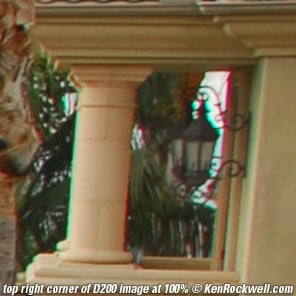
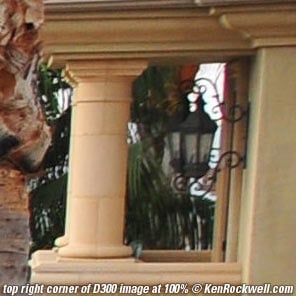
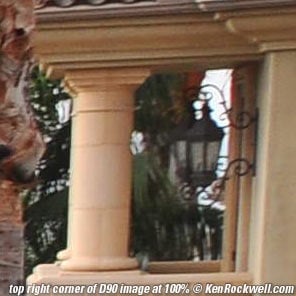
0 Response to "When Were Mirrorless Cameras Invented"
Post a Comment